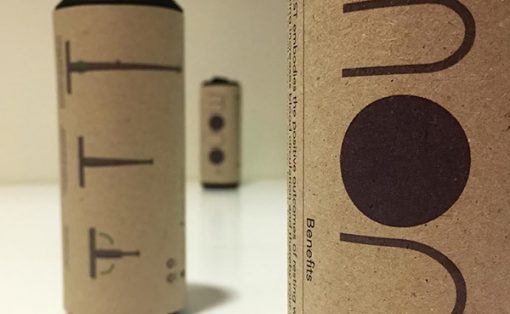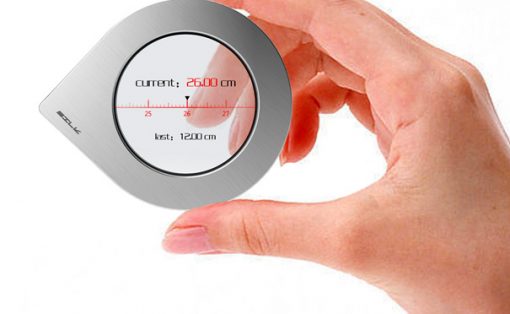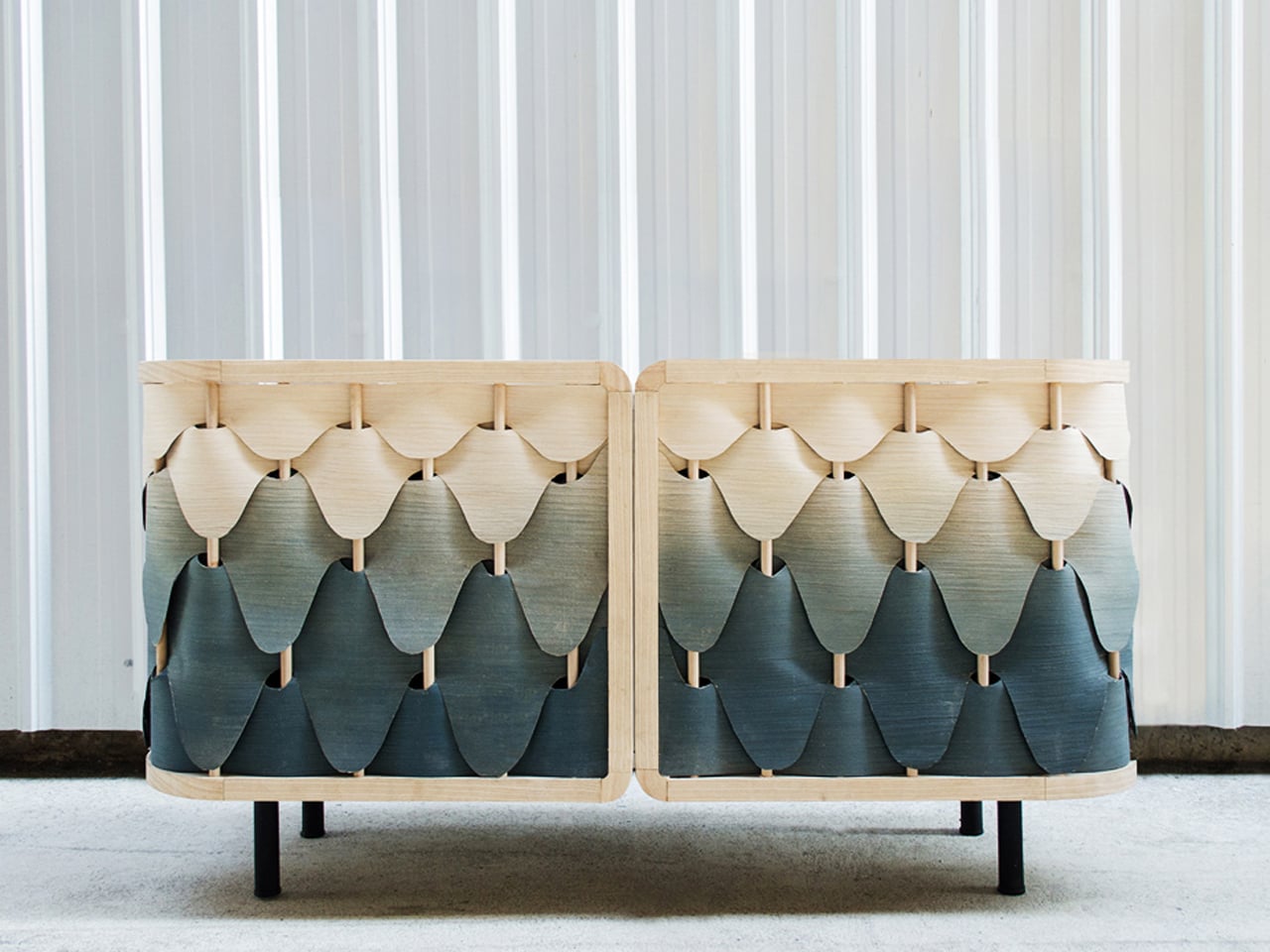
Patterns are essential in interior design, adding depth and character to spaces. Incorporating patterns in furniture can enhance your decor by creating striking focal points, reflecting your style, and adding visual interest. Whether through bold statement pieces, unique textures, or distinct area definitions, patterned furniture allows you to infuse personality and sophistication into your home while complementing your existing style.
Recent trends in patterned furniture include geometric designs with a modern twist for a balanced look, floral patterns that evoke a vintage feel, and abstract patterns that add vibrant colors. Stripes maintain a timeless quality, contributing to a cozy atmosphere. Textures are elevated with tufting, embossing, and woven materials, which add depth and richness to the overall design.
1. Geometric Patterns
Geometric patterns in furniture design have become a hallmark of modern aesthetics, blending form and function seamlessly. These patterns, characterized by their use of shapes like triangles, circles, and hexagons, add visual interest and a sense of order to spaces. Designers often employ geometric motifs to create a contemporary look, utilizing clean lines and symmetrical forms that can complement various interior styles.
Beyond aesthetics, geometric patterns can also enhance the functionality of furniture, as they often incorporate modular elements that allow for flexibility and adaptability in different settings. This design approach not only elevates the visual appeal but also adds a layer of sophistication to any room.
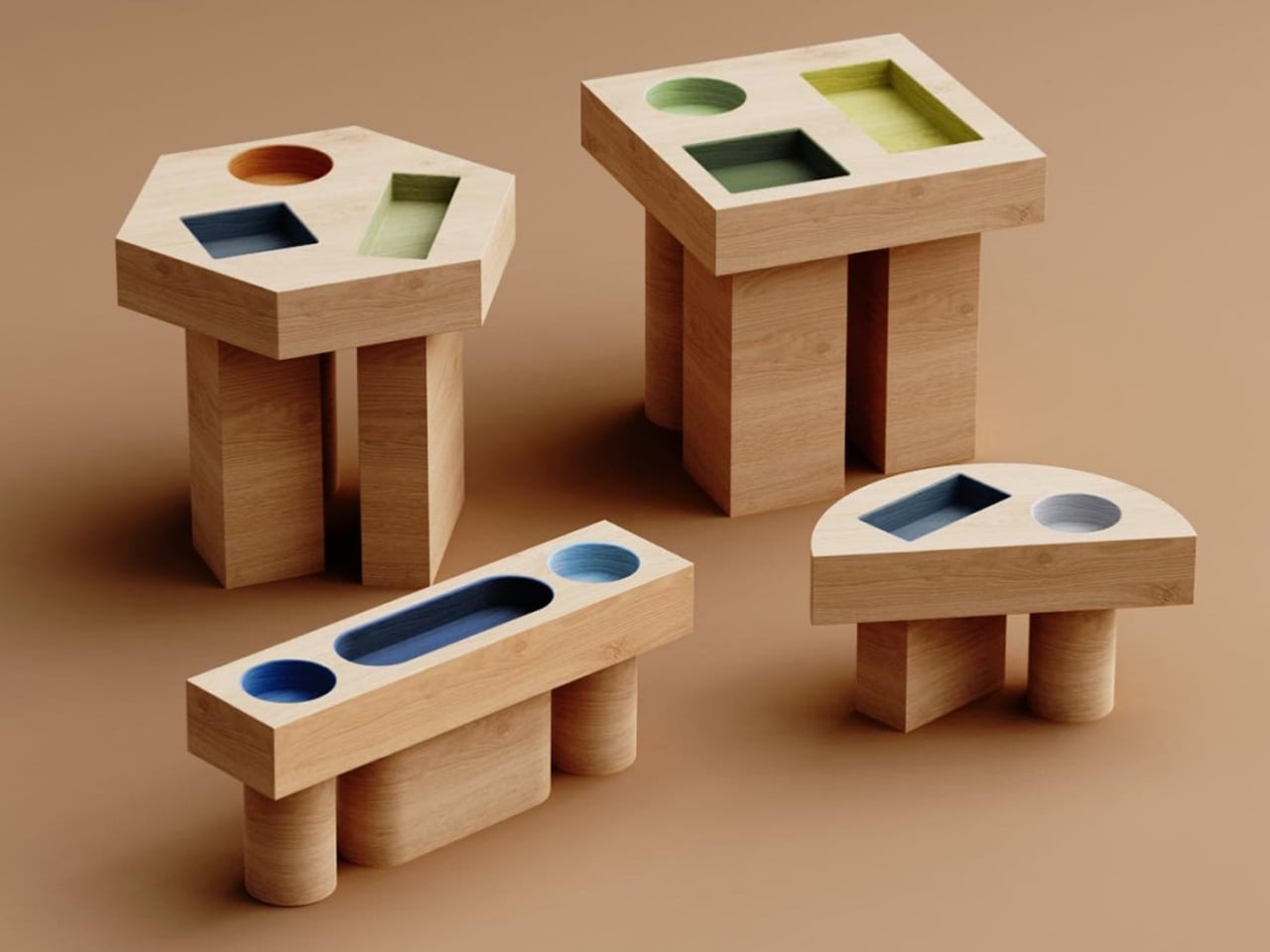
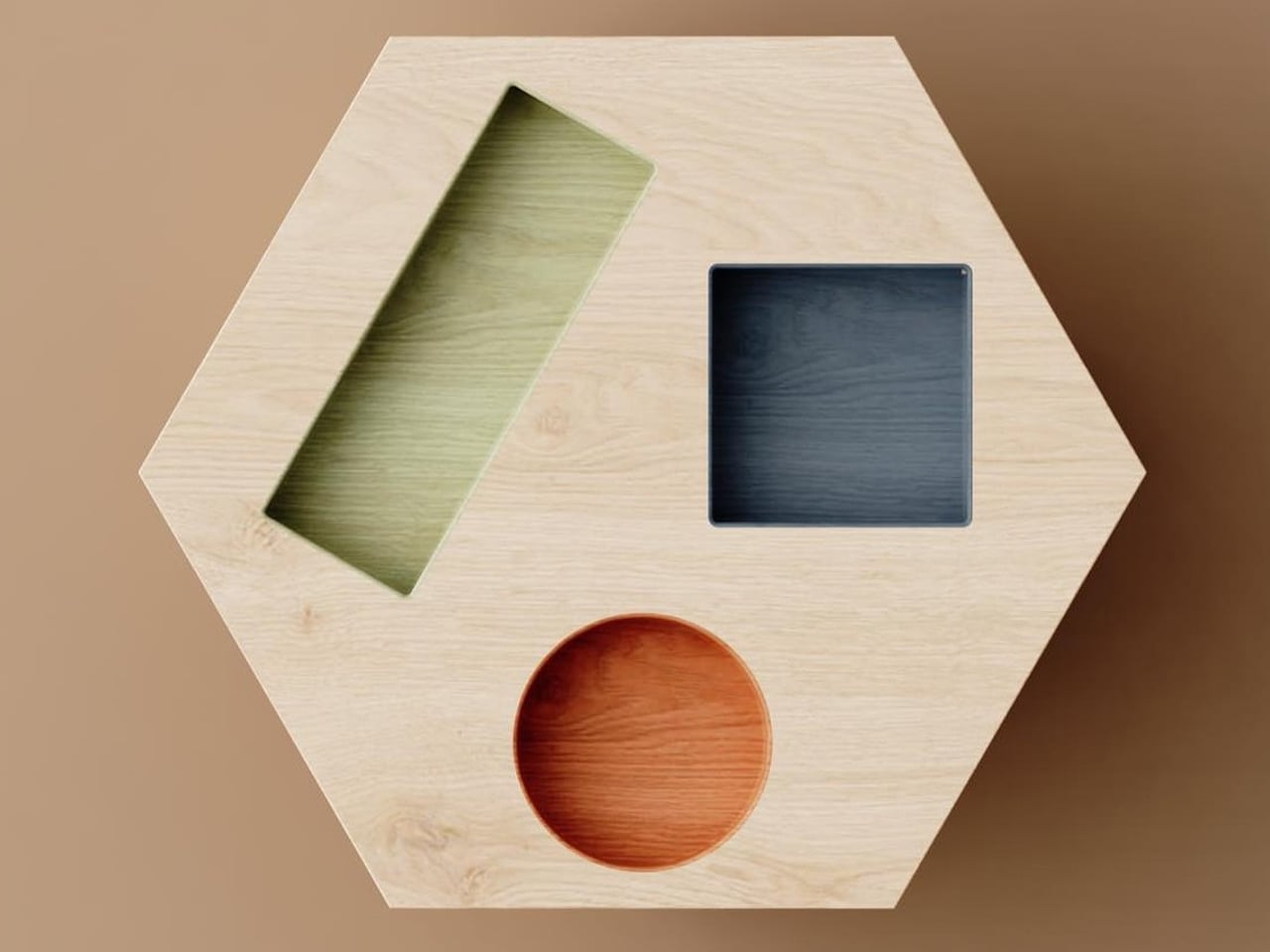
The Designated Table collection showcases side tables with eye-catching geometric cutouts—circles, squares, and rectangles—that serve as design elements and practical storage compartments. These playful patterns add a whimsical touch while providing functional spaces for organizing items.
Available in various shapes like hexagons and half-circles, the tables feature legs that complement the geometric designs, seamlessly blending style with practicality.
2. Play with Form
Design form in furniture emphasizes the creation of pieces that harmoniously blend aesthetics with functionality. This approach focuses on the shape, structure, and overall silhouette of furniture, ensuring that each piece not only serves its intended purpose but also enhances the visual appeal of a space.
Designers often experiment with curves, angles, and proportions to craft innovative forms that can stand as artistic statements. The emphasis on form allows for the exploration of various materials and techniques, resulting in unique pieces that cater to diverse tastes and needs. Ultimately, form design in furniture seeks to create timeless and elegant pieces that resonate with users on both a practical and emotional level.
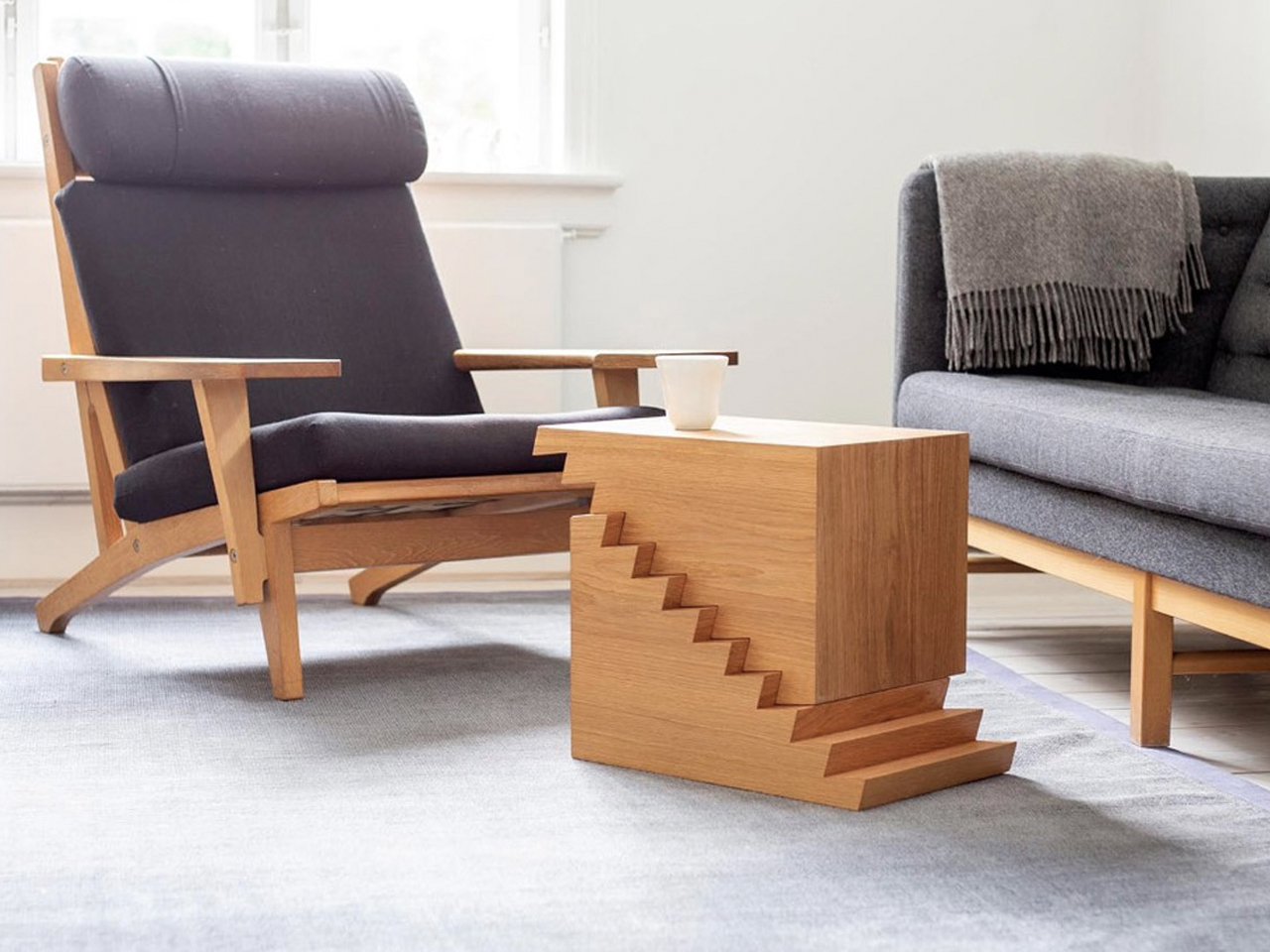
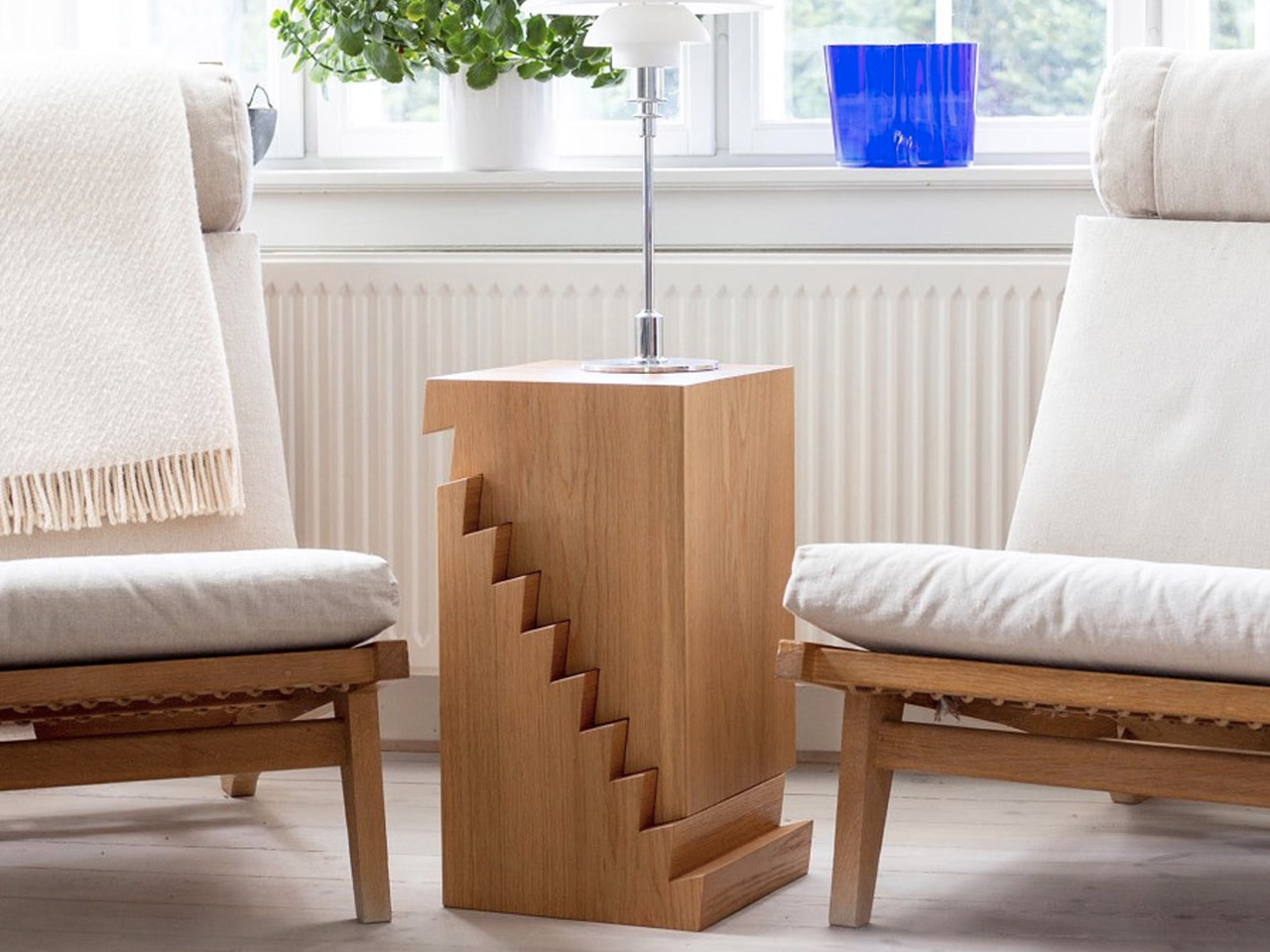
Bjarke Ballisager’s Together and Apart Table showcases a sculptural sawtooth cutout pattern in solid white oak. This innovative design serves as a versatile table and stands as a piece of art, seamlessly adapting to various heights and functions while adding a unique visual element to your home decor.
The sawtooth pattern also allows for an interactive element to be added to the table, amplifying its functionality. The result is a fun piece of modern furniture that easily becomes the focal point of any space.
3. Experiment With Color
Color plays a crucial role in furniture design, influencing mood, perception, and style. It can transform a space, making it feel vibrant and energetic or calm and soothing. Designers use color to create visual harmony, accentuate design features, and evoke specific emotions.
Along with this, color choices can affect the perceived size of a room, with lighter hues making spaces appear larger and darker tones adding warmth and coziness. Ultimately, color selection is vital in achieving a cohesive and appealing design.
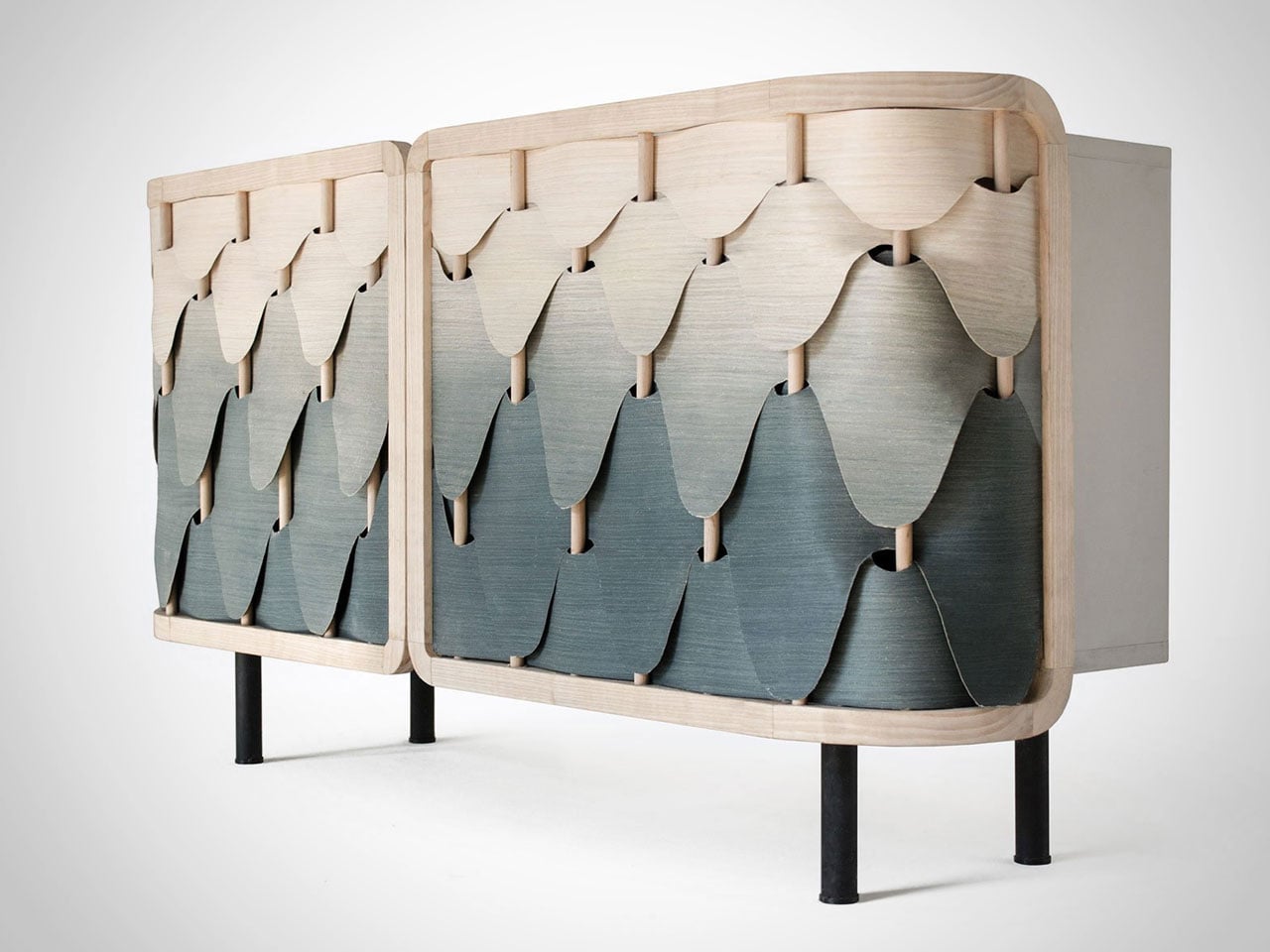
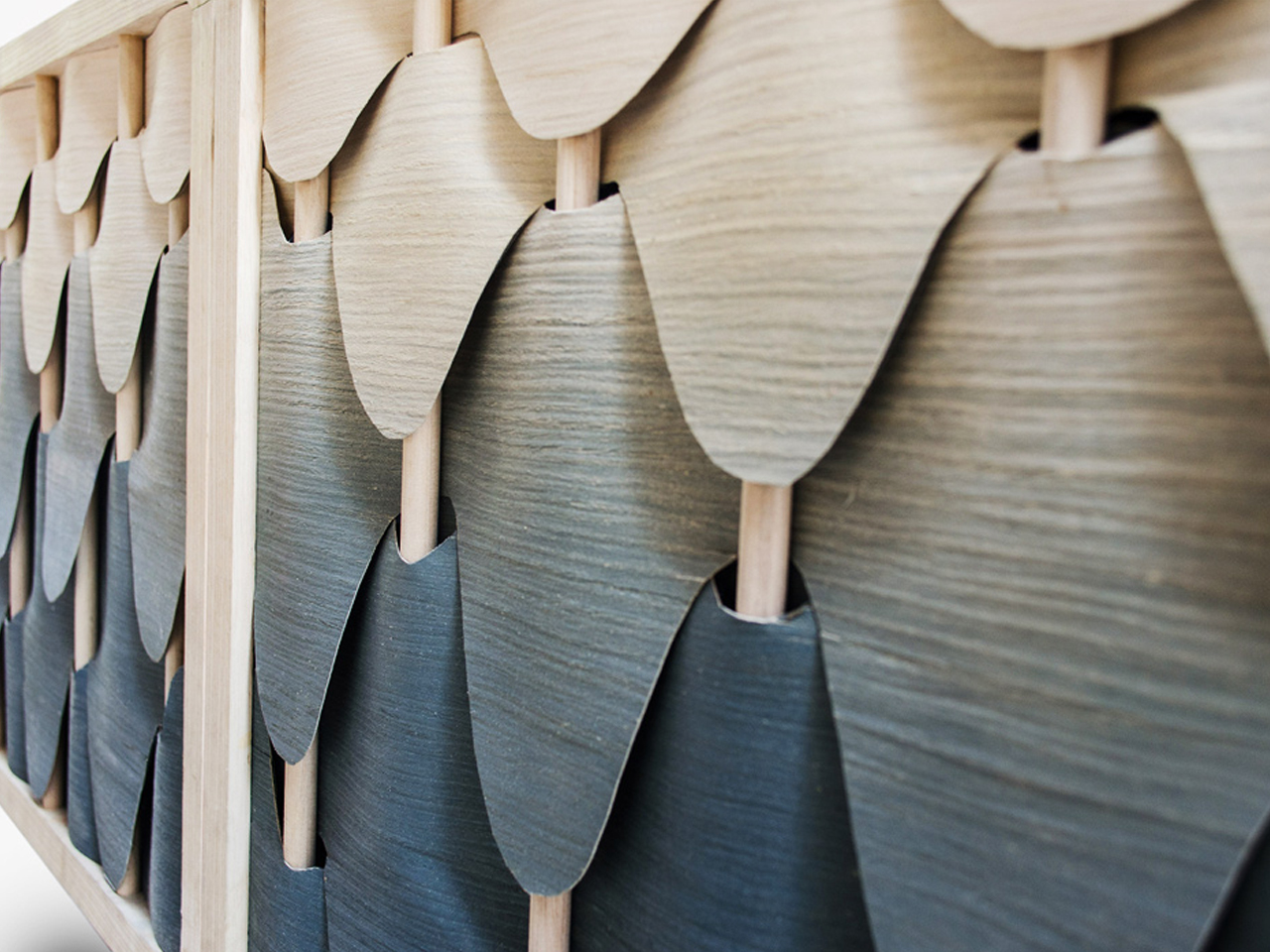
The Alato Cabinet, designed by Pakawat Vijaykadga and Jumphol Socharoentham, students of furniture design in Thailand, features a captivating wave-like pattern that transitions through a gradient of cool colors on its front panel.
Inspired by the intricate arrangement of feathers, the designers employed an interlocking pattern to emulate the delicate gradient seen in a bird’s plumage.
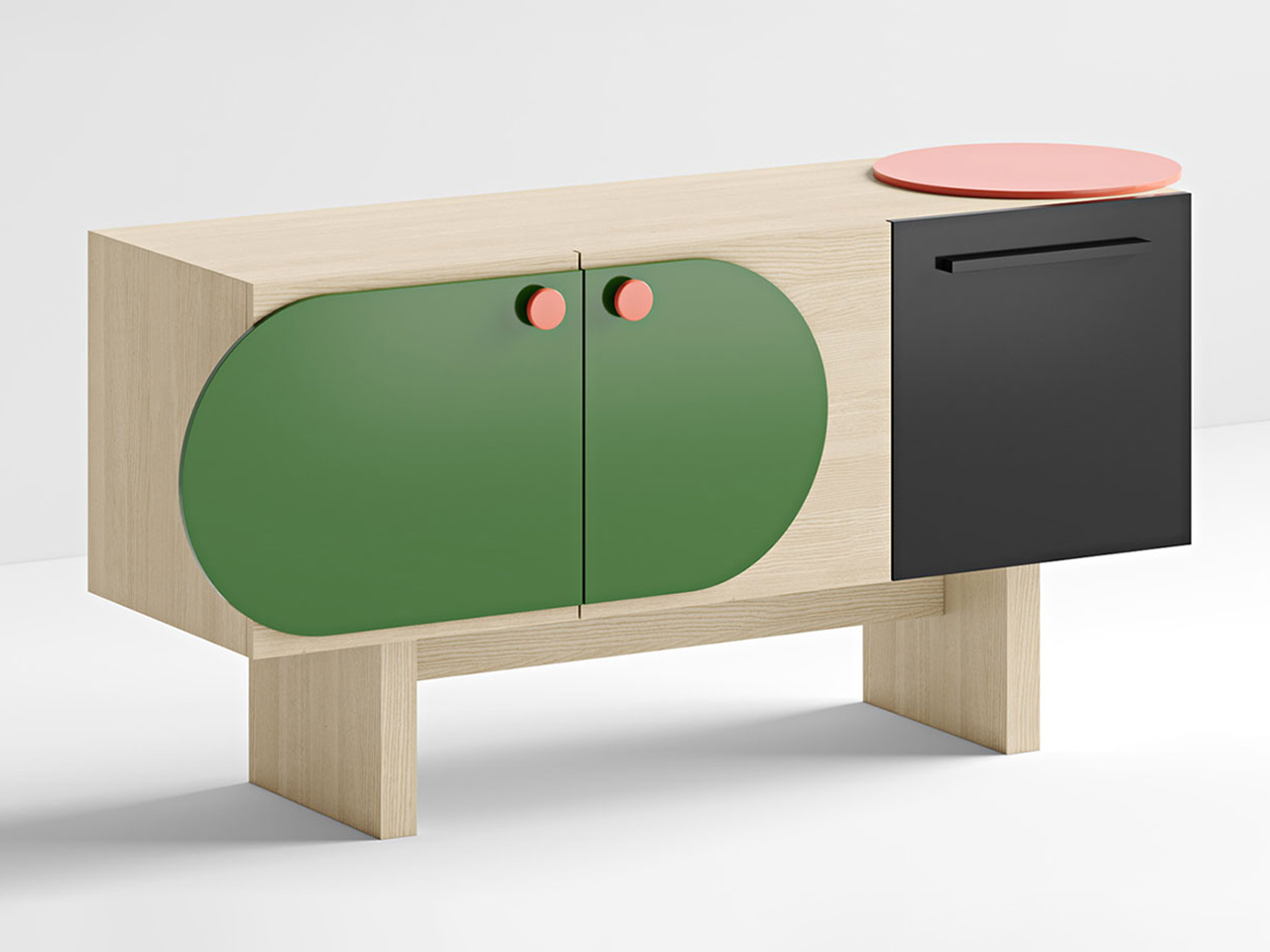
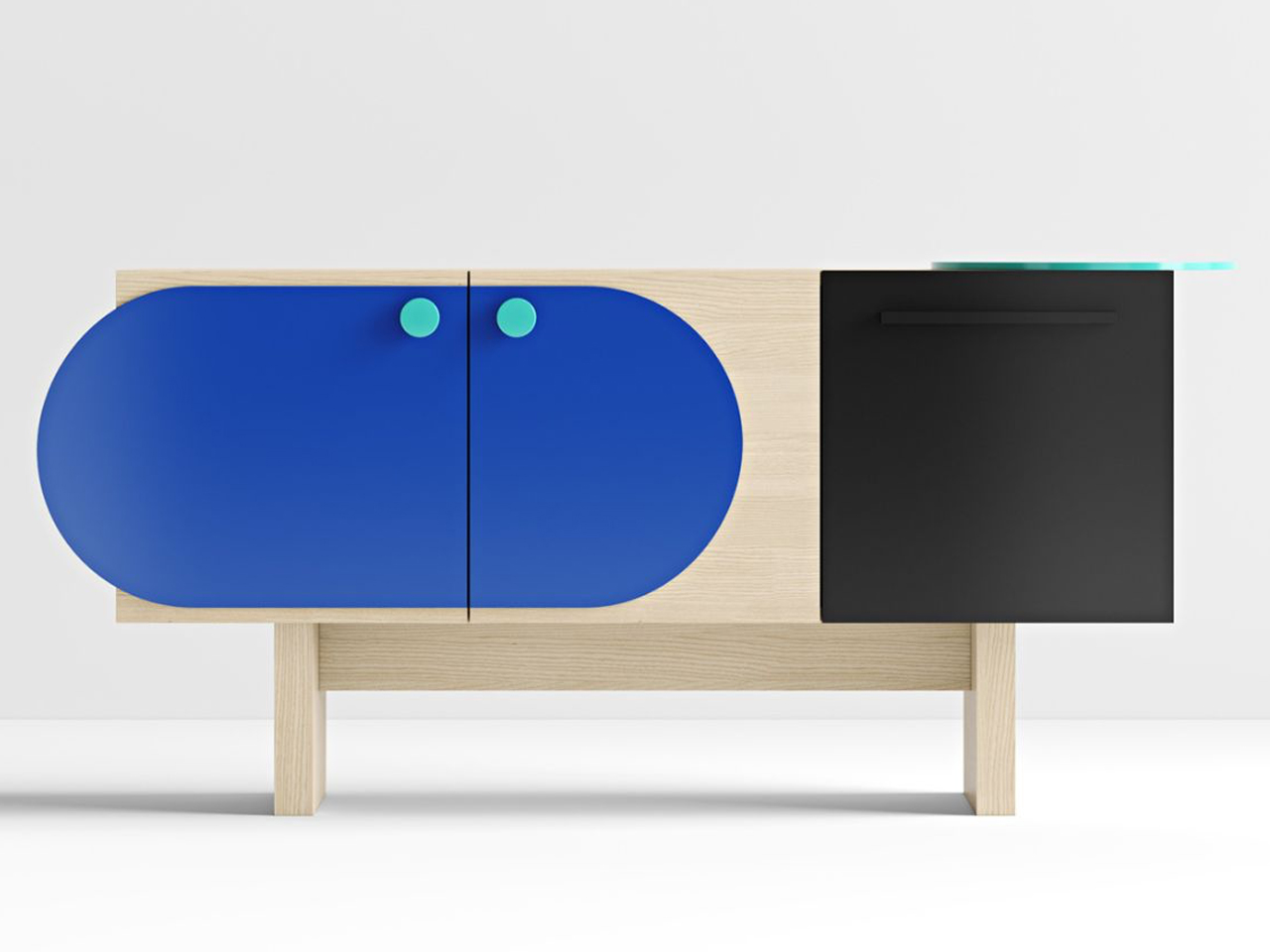
The “Funky” furniture collection brings vibrant artistry to any space with its eclectic design and bold color palettes. The interplay of vivid hues creates captivating patterns and textures, making each piece a striking focal point. This versatile unit can serve as a storage solution or multi-purpose table, seamlessly blending artistic charm with practicality.
Available in three distinct color combinations, “Funky” enhances your home with dynamic patterns and a unique, conversation-starting presence.
4. Form Follows Function
The principle of “form follows function” in furniture design emphasizes practicality and purpose over aesthetics. This design philosophy ensures that a piece’s shape and appearance are dictated by its intended use, resulting in furniture that is both efficient and user-friendly.
By prioritizing functionality, designers create pieces that seamlessly integrate into everyday life, offering comfort and convenience. This approach leads to timeless designs that maintain their relevance and utility, balancing beauty with practicality.
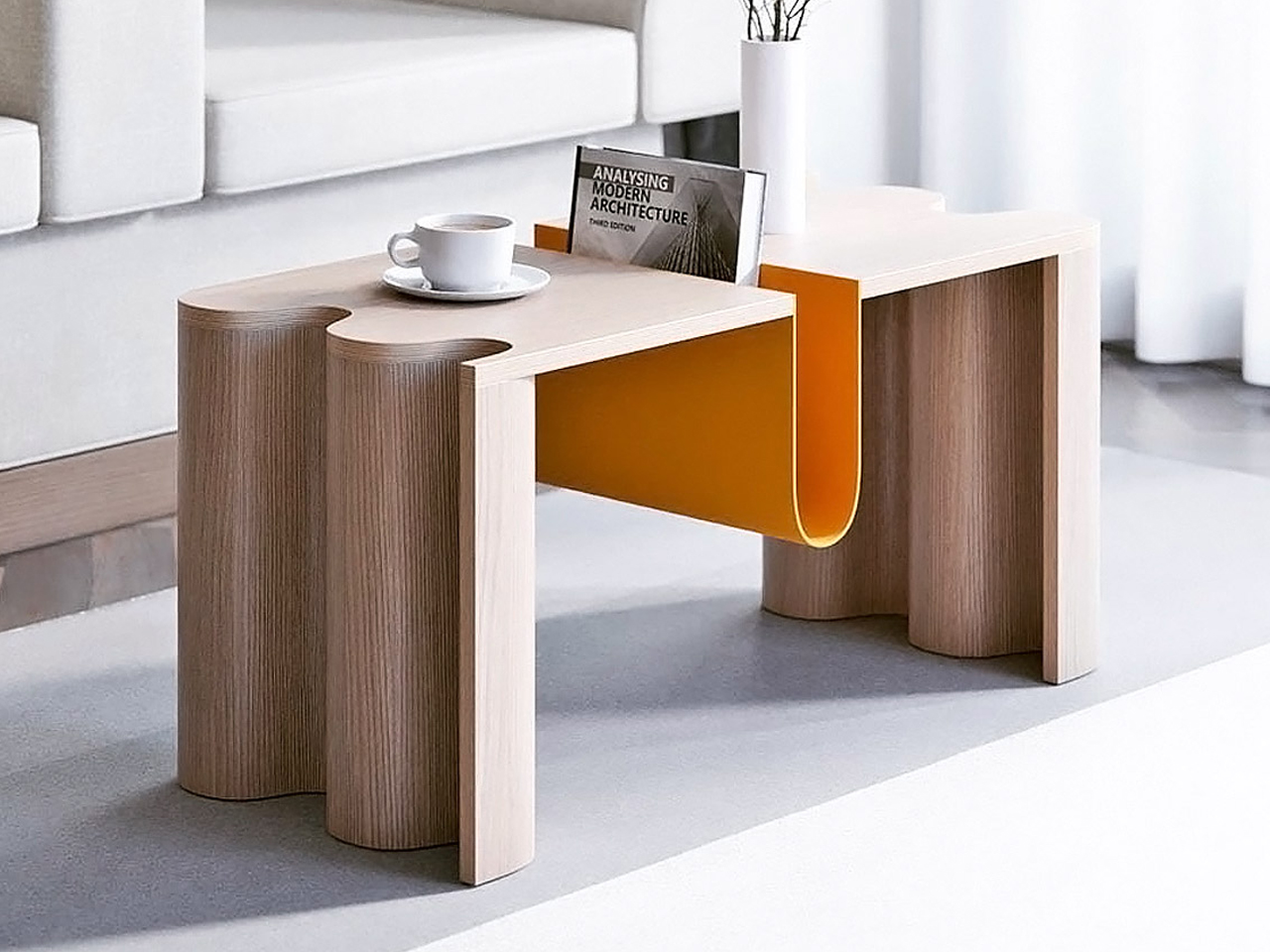
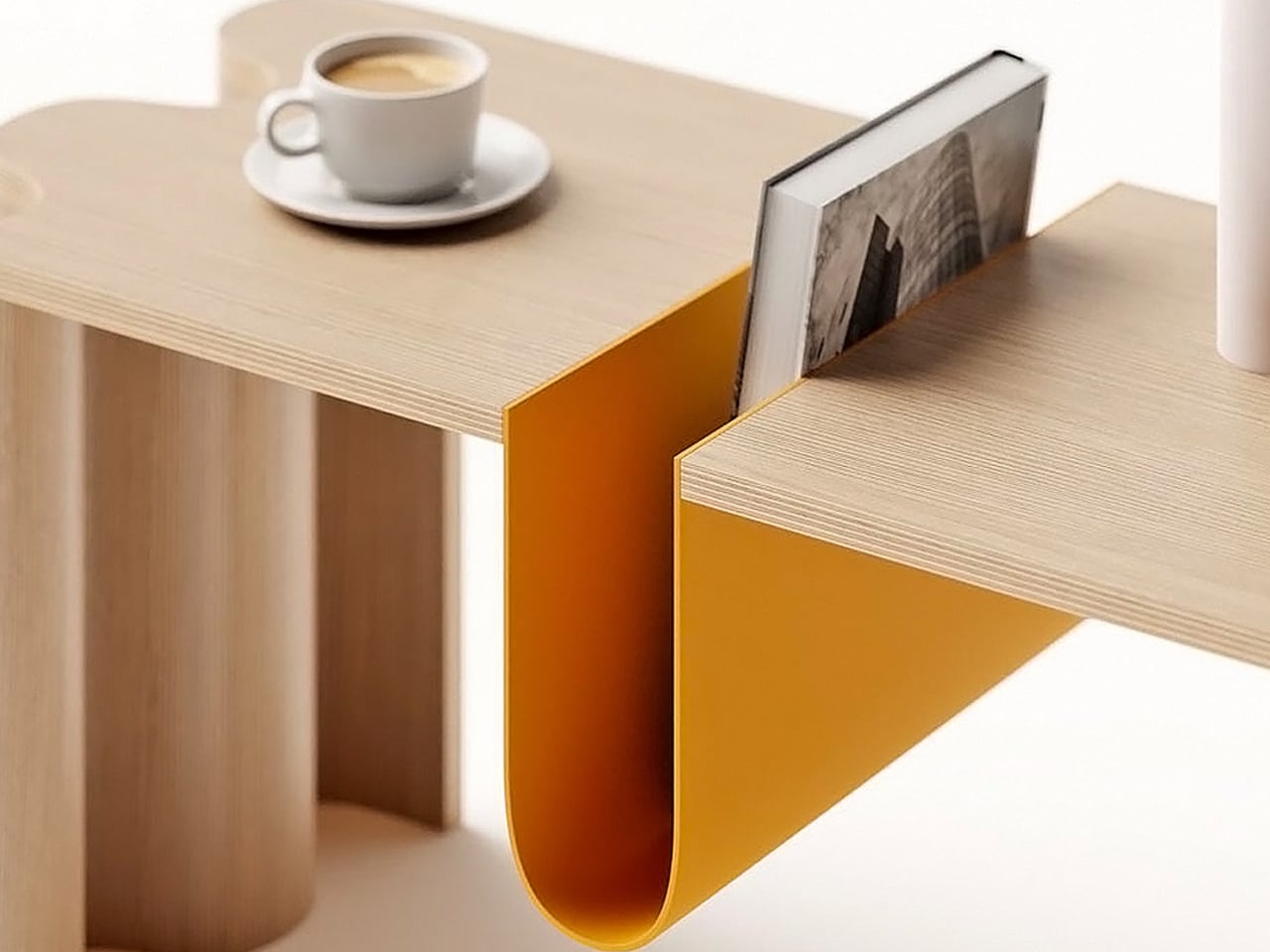
Designed by João Teixeira, the Cloth coffee table blends Scandinavian and Japanese design elements to create a bold yet refined look. It features a curved bookstand as its centerpiece, the table not only enhances visual appeal but also offers practical functionality.
With its graceful curves and intricate details, the Cloth coffee table exemplifies the principle that form follows function, serving as a striking focal point and a versatile addition to any space.
5. Modern Meets Classic
In furniture design, the fusion of modern and classic styles creates a timeless aesthetic that appeals to diverse tastes. This approach combines sleek, contemporary lines with traditional elements, such as ornate carvings or rich wood finishes.
The result is a harmonious blend that respects historical design while embracing modern simplicity and functionality. By integrating the best of both worlds, this style offers versatility and sophistication, making it suitable for various interior settings.
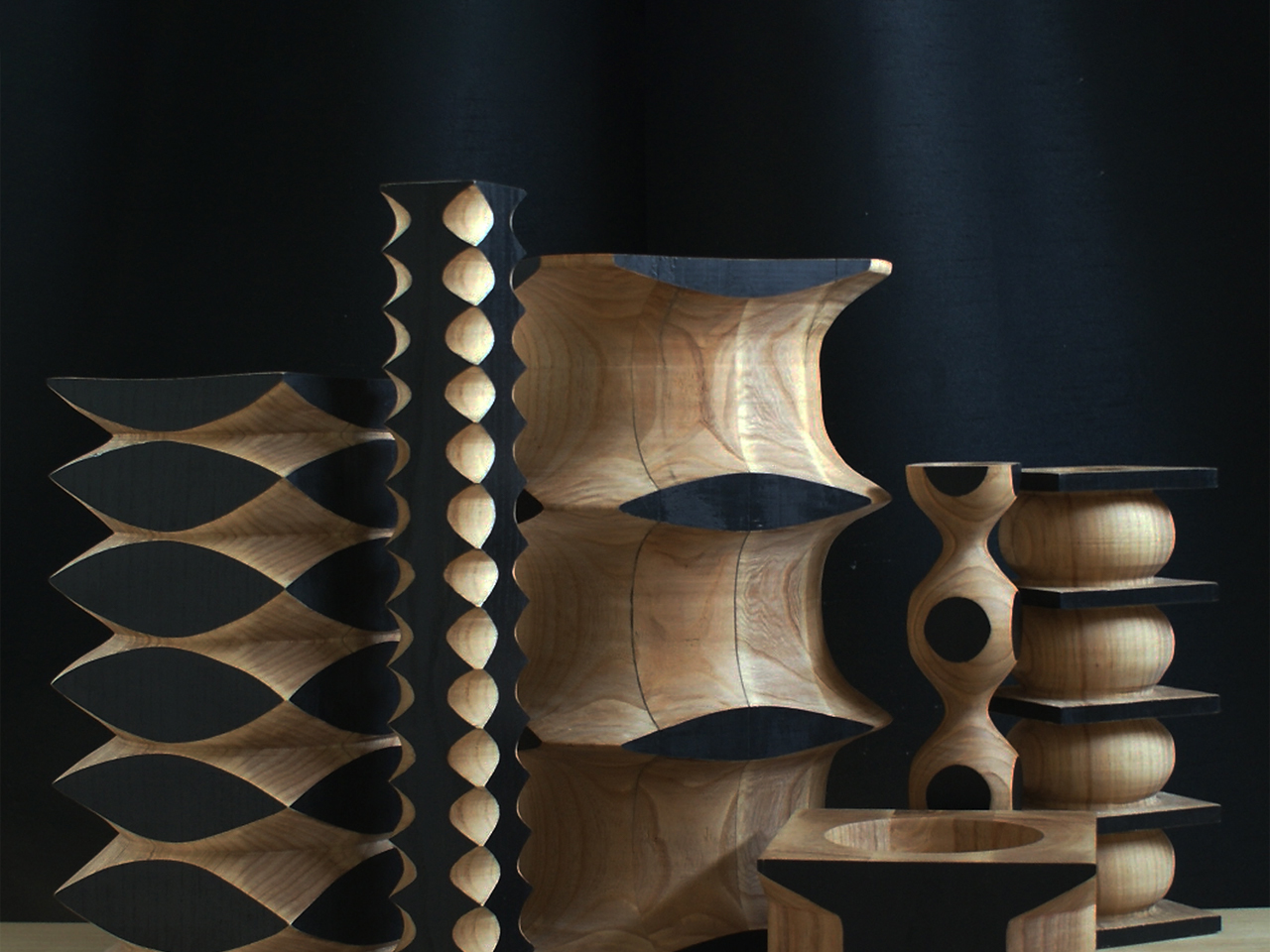
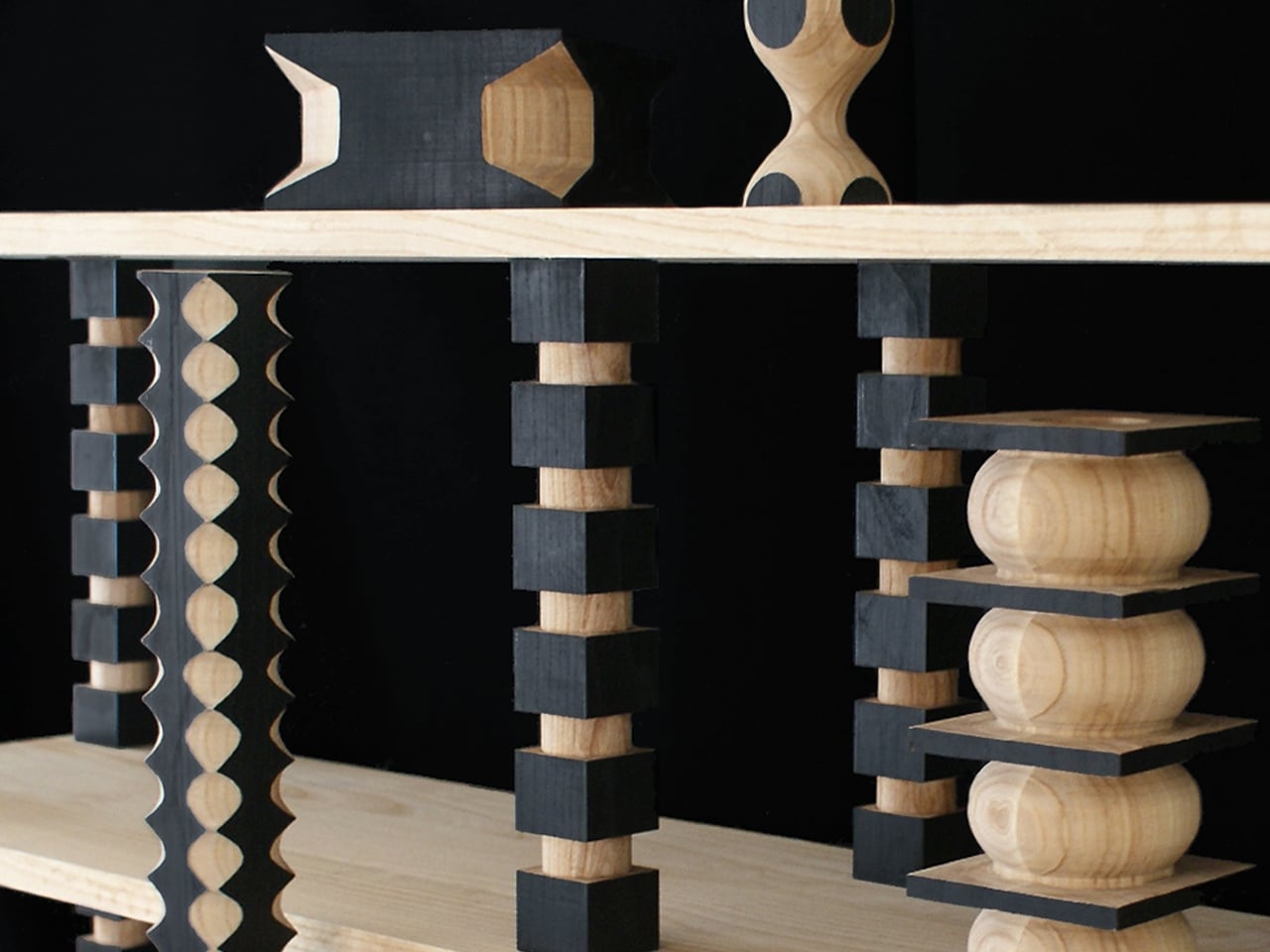
Koen Boersma’s “A Different Turn” collection reimagines the ancient craft of woodturning with a contemporary flair. By using traditional tools, Boersma transforms rectangular wood blocks into unique furniture pieces with alternating round and square patterns.
Each design highlights the natural grain of the wood, creating intricate patterns that blend traditional techniques with modern aesthetics for truly one-of-a-kind forms.
6. Use Patterned Fabric
Patterned fabric in furniture design adds depth and character, transforming simple pieces into statement items. Designers use a variety of patterns, from florals to geometrics, to inject personality and style into furniture. These fabrics can highlight a piece’s structure and complement the overall decor theme.
Patterns can serve practical purposes, such as camouflaging wear and tear. Ultimately, the use of patterned fabric enhances visual interest and offers endless customization possibilities.
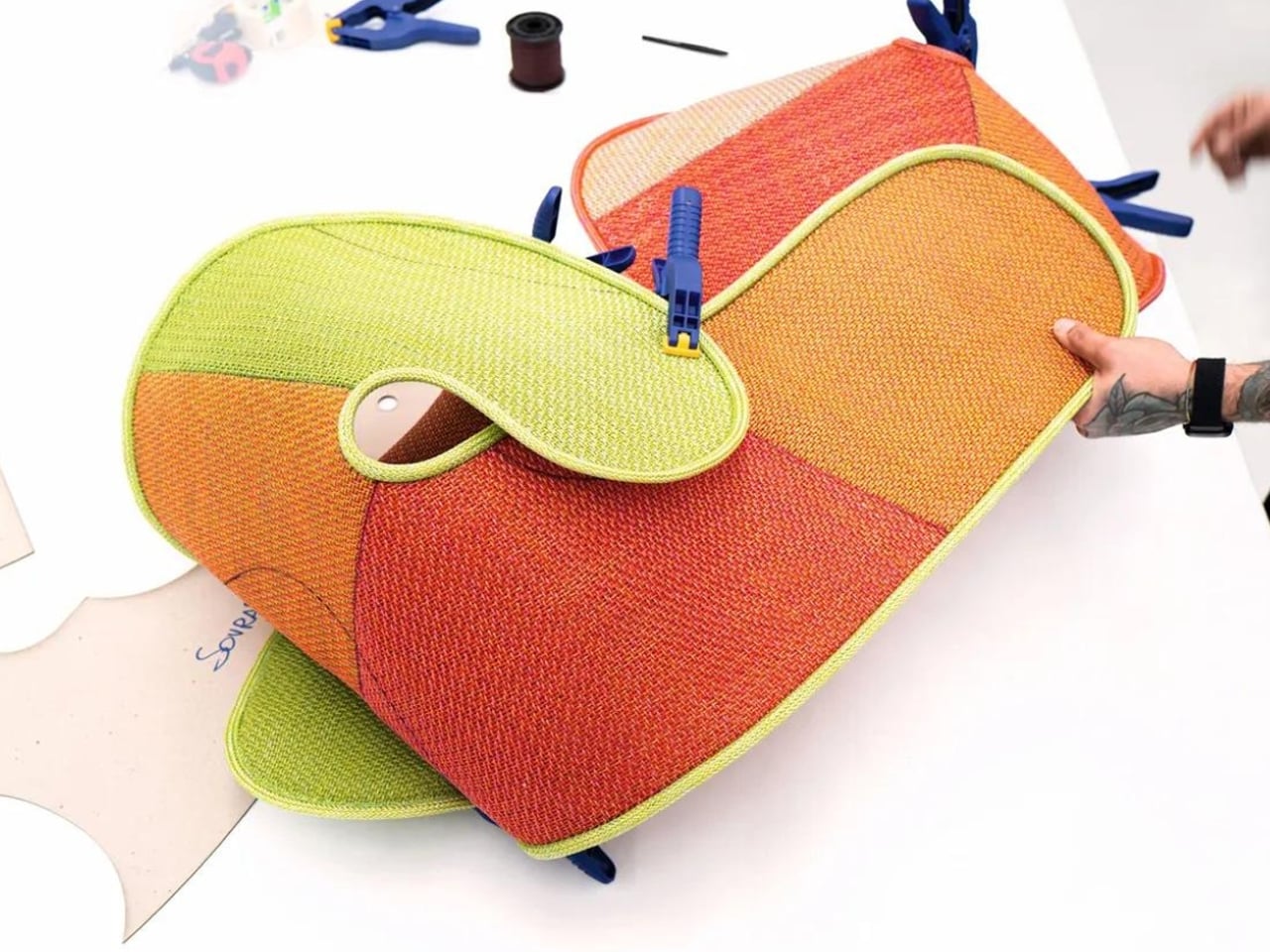
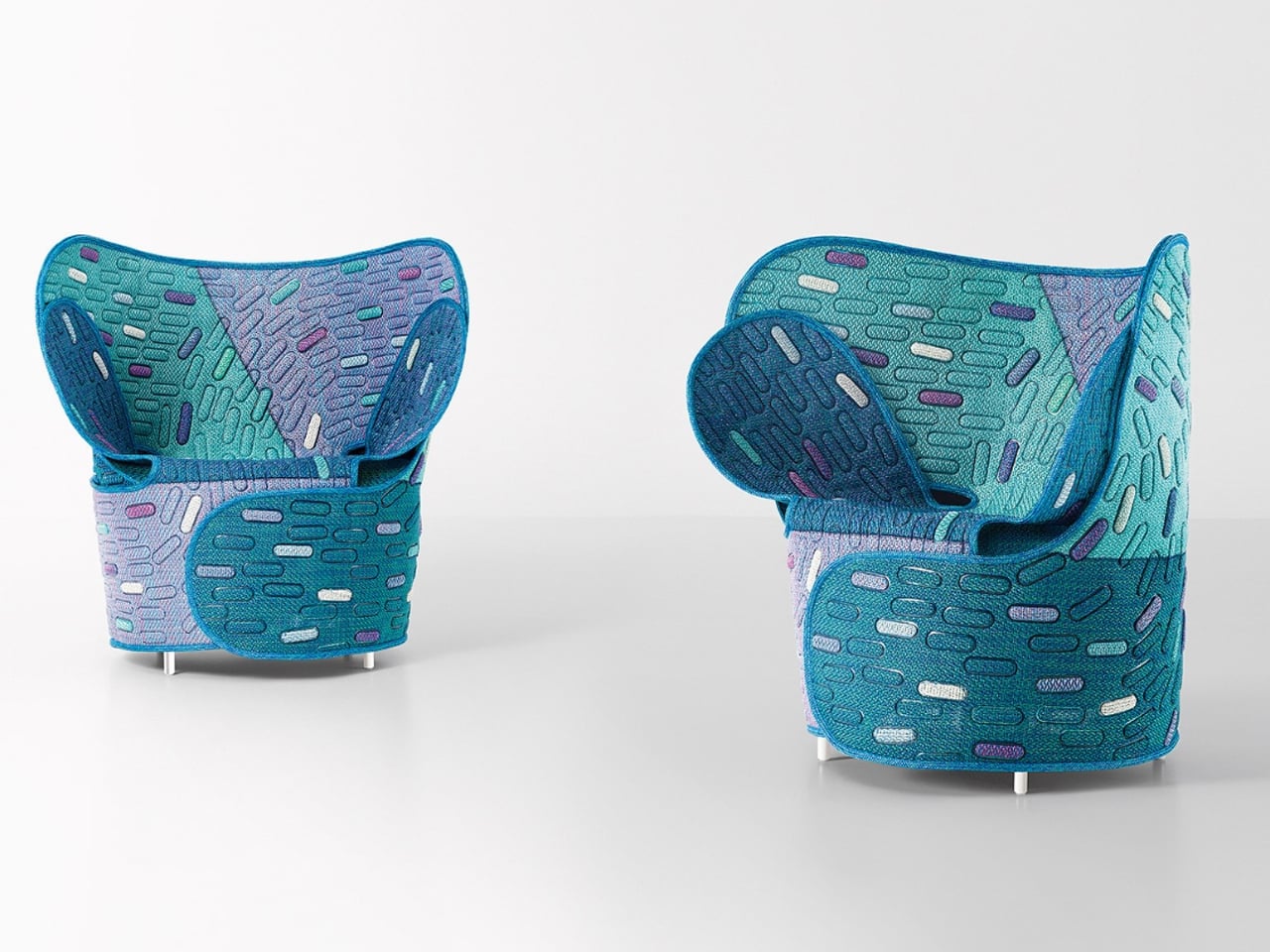
The Hanara-shi series, introduced by Paola Lenti and Nendo, is a striking collection inspired by Japanese cherry blossoms and samurai armor. This series features suspended lamps, baskets, floor lamps, armchairs, and poufs, each adorned with vibrant colors and intricate patterns.
Crafted from Maris mesh—a 100% recyclable polypropylene—the collection blends artistic design with sustainability, incorporating recovered cutoffs to enhance its eco-friendly credentials.
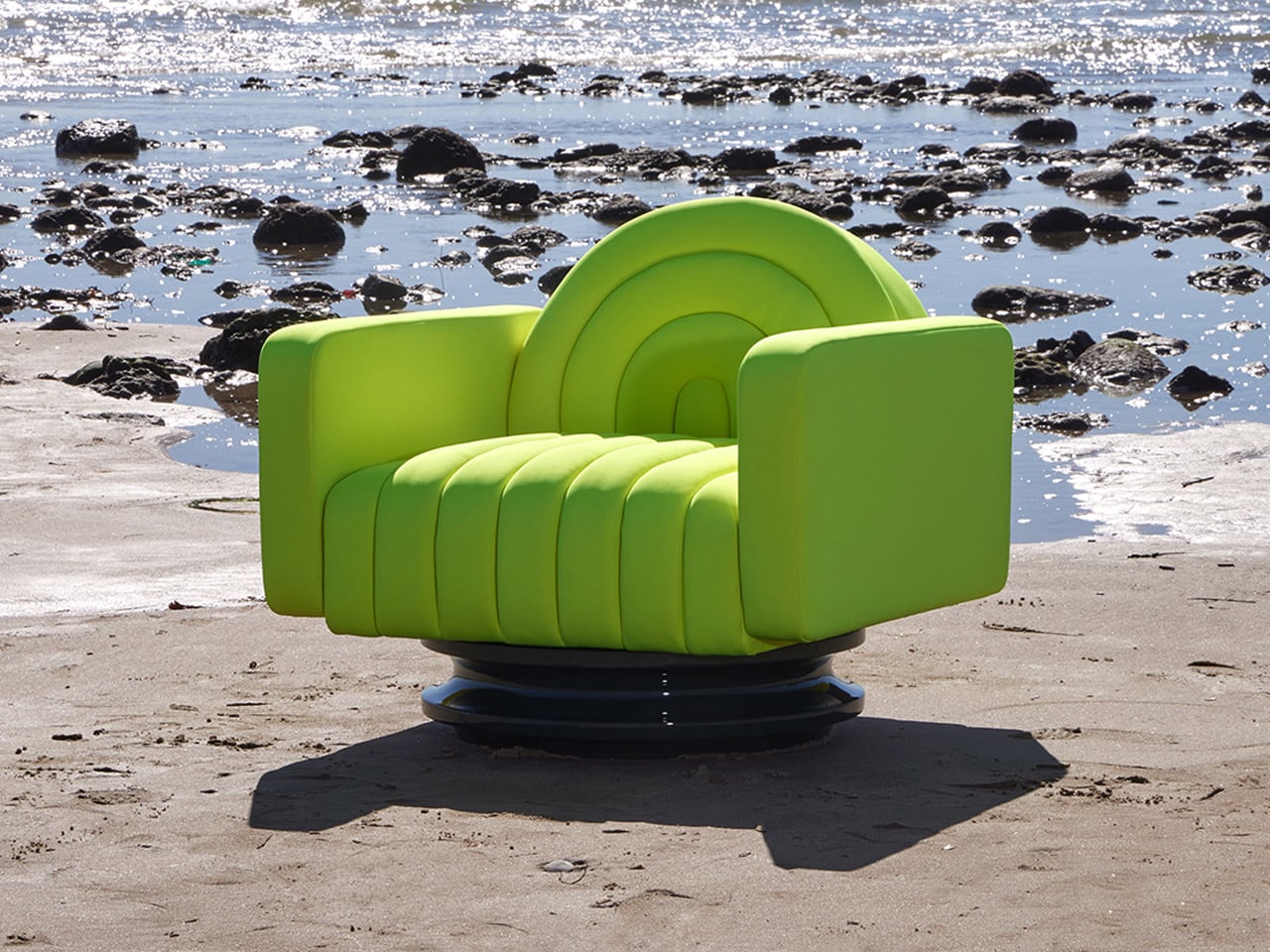
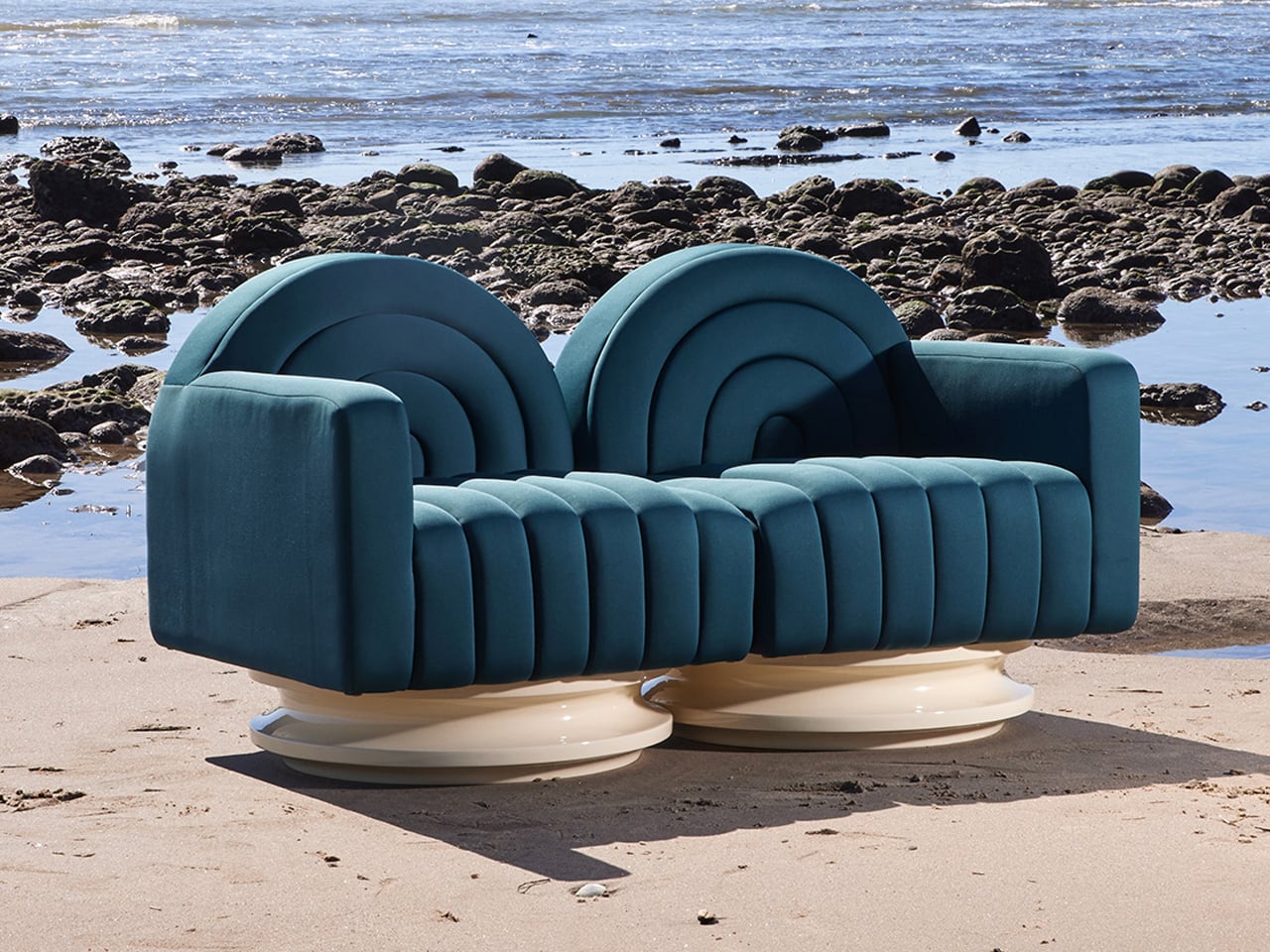
The Mondos collection by Laun and Chet Architecture features outdoor furniture that showcases a unique pattern created by tufting. Inspired by the dynamic waves of Mondos Beach, the tufted design adds texture and visual interest to the pieces.
This six-piece set, including a sofa, loveseat, side chair, chaise, side table, and coffee table mimics the fluid, curving forms of beach waves, enhancing comfort and style. The Mondos collection brings a distinctive, beach-inspired elegance to any outdoor space with its bold colors and textured patterns.
7. Beautify with Pop Furniture
Pop style in furniture design is characterized by its bold colors, playful shapes, and a sense of whimsy that draws inspiration from pop art and culture. This design style embraces unconventional materials and vibrant patterns, often incorporating elements of surprise and humor.
Pop style pieces serve as focal points in a room, bringing energy and a youthful vibe. By breaking traditional design rules, pop style encourages creativity and self-expression in home decor.
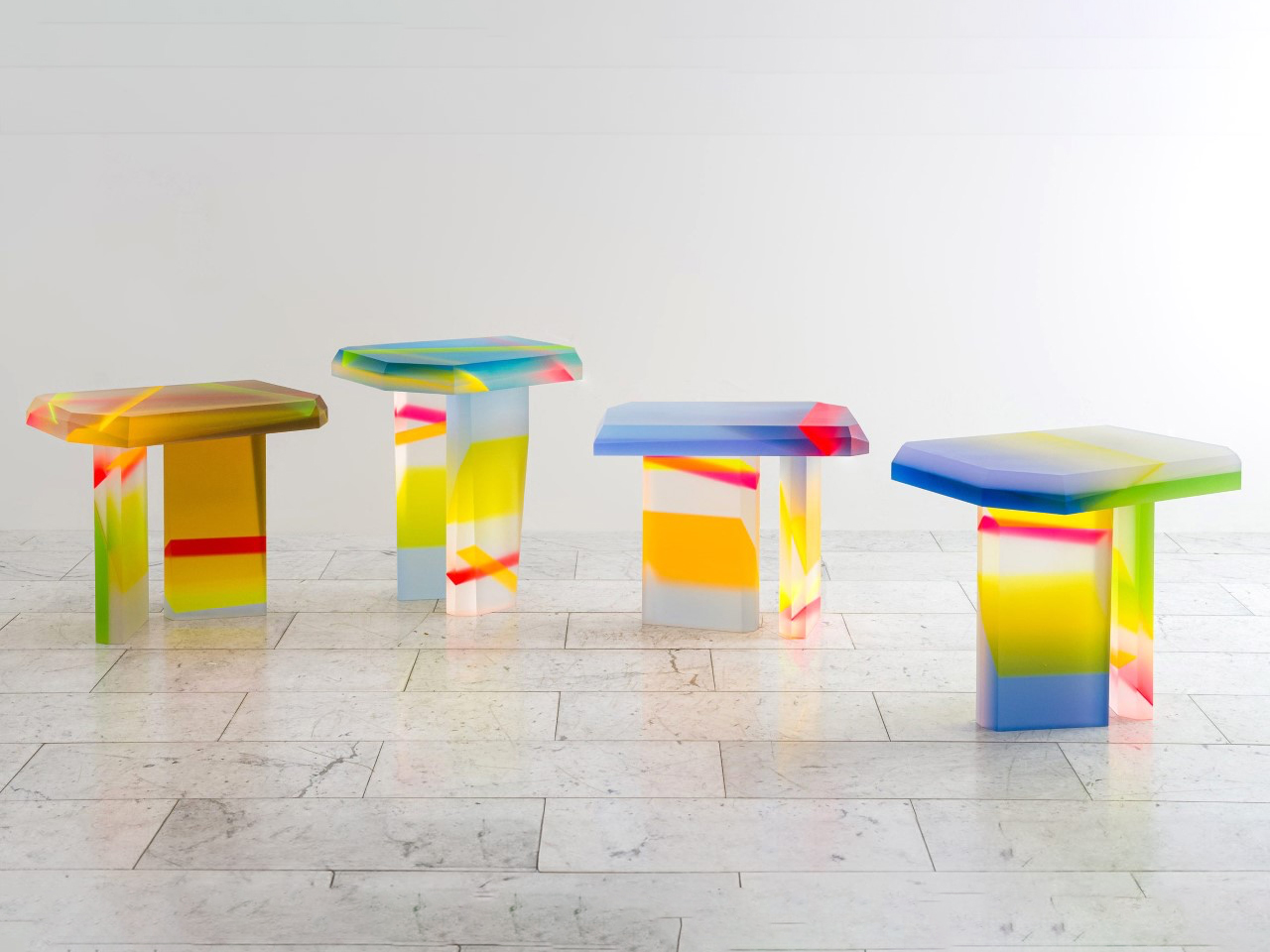
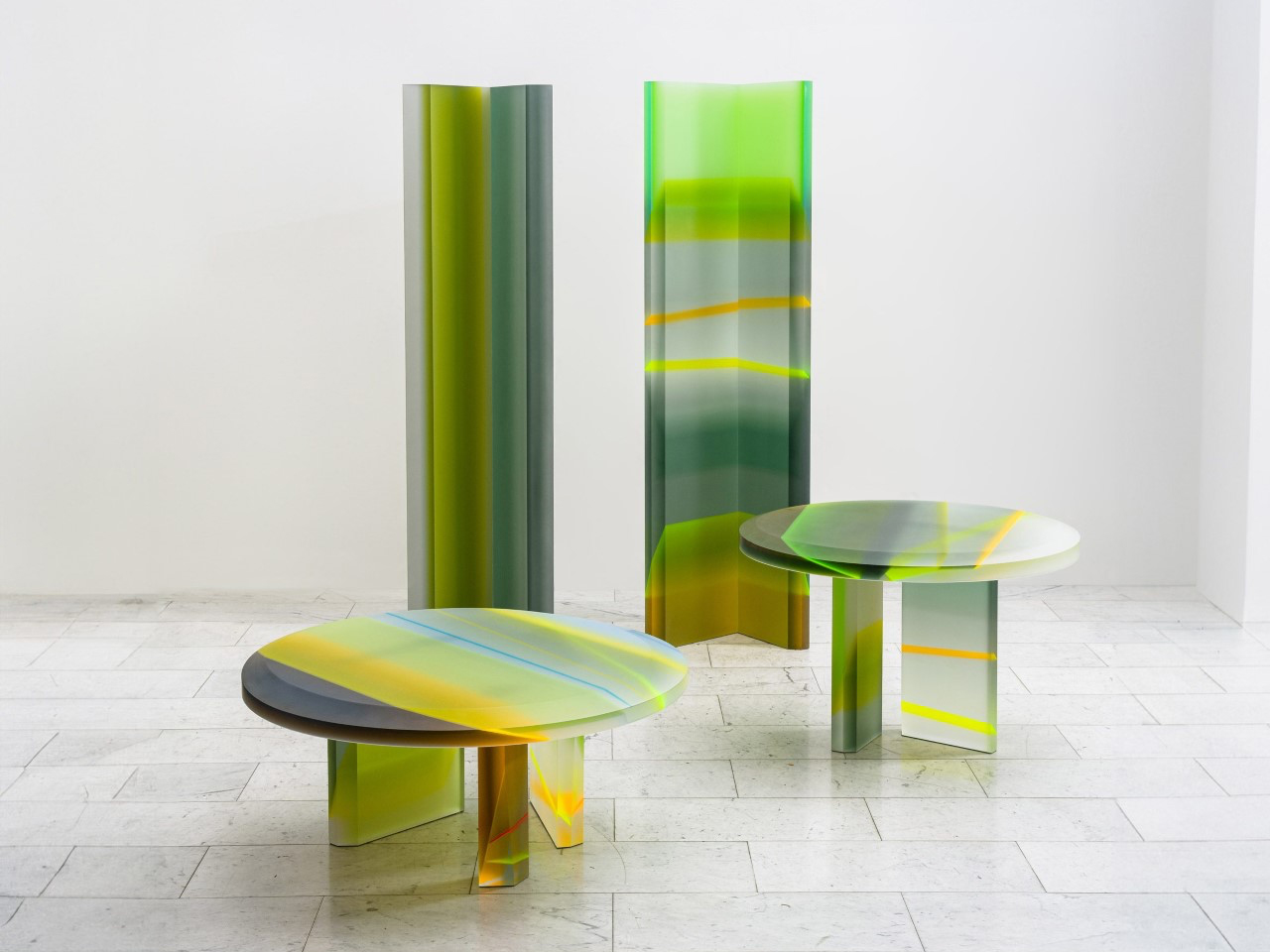
Flare by Draga & Aurel is a striking furniture collection that explores refraction with multicolored Lucite blocks. Handcrafted into tables and totems, each piece features bold geometric shapes and abstract patterns, creating a dynamic pop-futuristic look.
The layered acrylic produces a kaleidoscope effect that shifts with light, merging art with function for a vibrant touch in quirky, minimalist spaces.
8. Striped Patterns
Stripes in furniture design offer a versatile way to introduce rhythm and movement into a space. Whether bold or subtle, vertical or horizontal, stripes can elongate or widen the appearance of furniture, influencing the room’s perceived dimensions.
Designers often use stripes to add a touch of sophistication or a playful edge, depending on the color palette. This pattern can complement various styles, from modern to traditional, making it a popular choice for dynamic and engaging interiors.
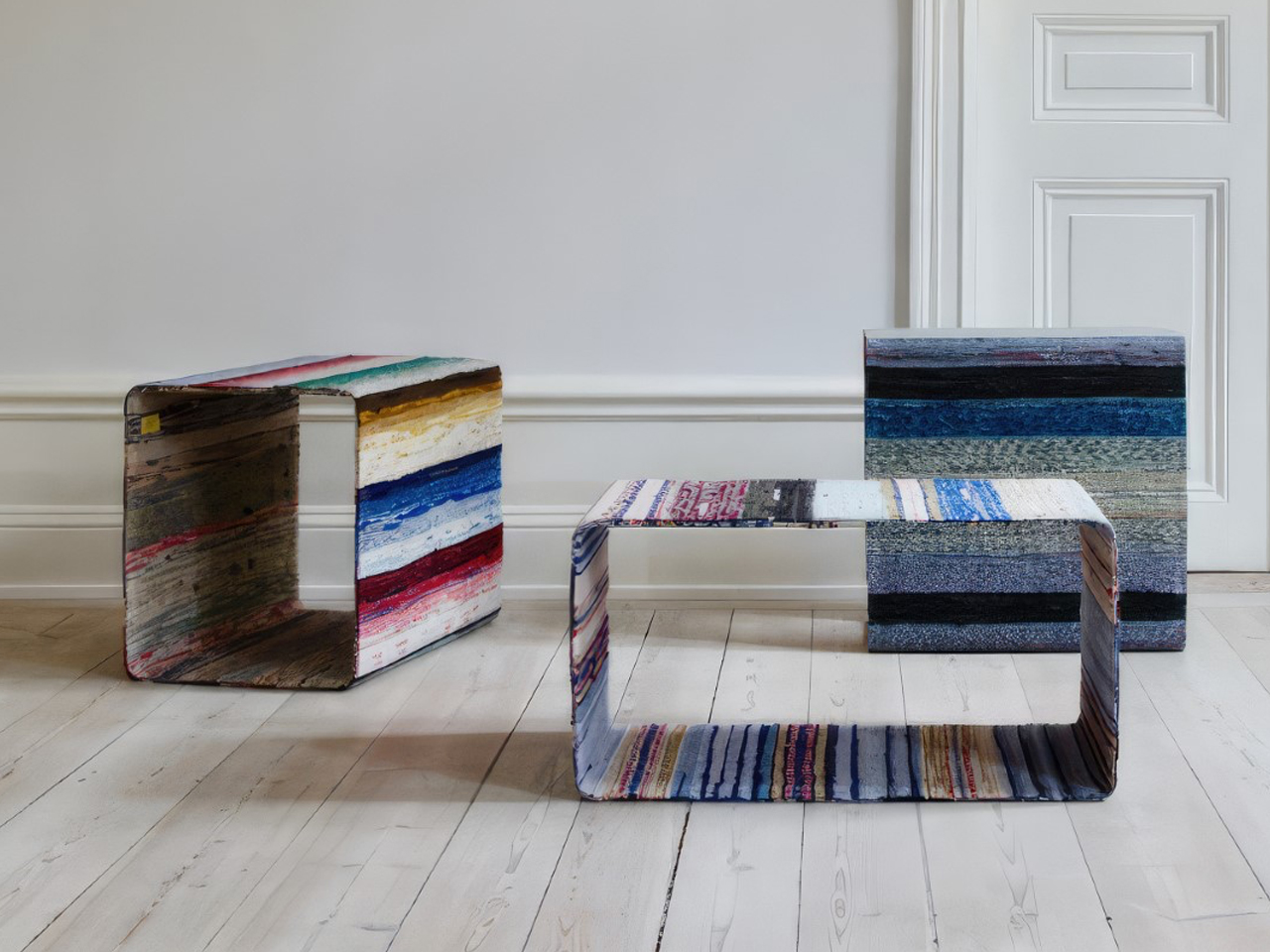
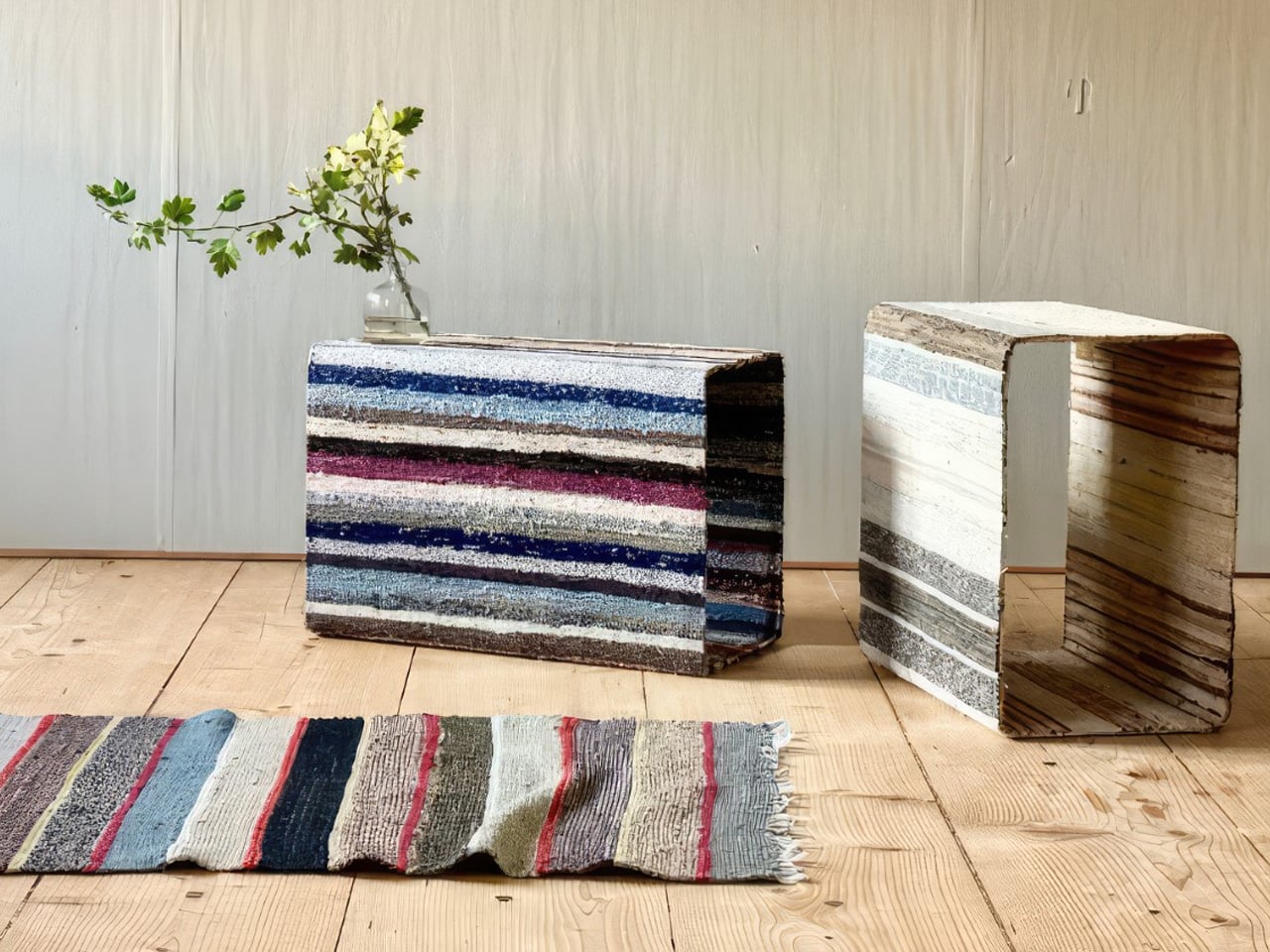
With his Rumbler collection, Stockholm-based designer Lars Hofsjö reimagines traditional Swedish rag rugs into modern furniture. By selecting and wrapping repurposed rag rugs—known for their striped patterns—around aluminum shapes, Hofsjö creates unique, plush side tables that blend rustic charm with contemporary design.
Hofsjö’s work preserves Swedish heritage while introducing sustainable and innovative design.
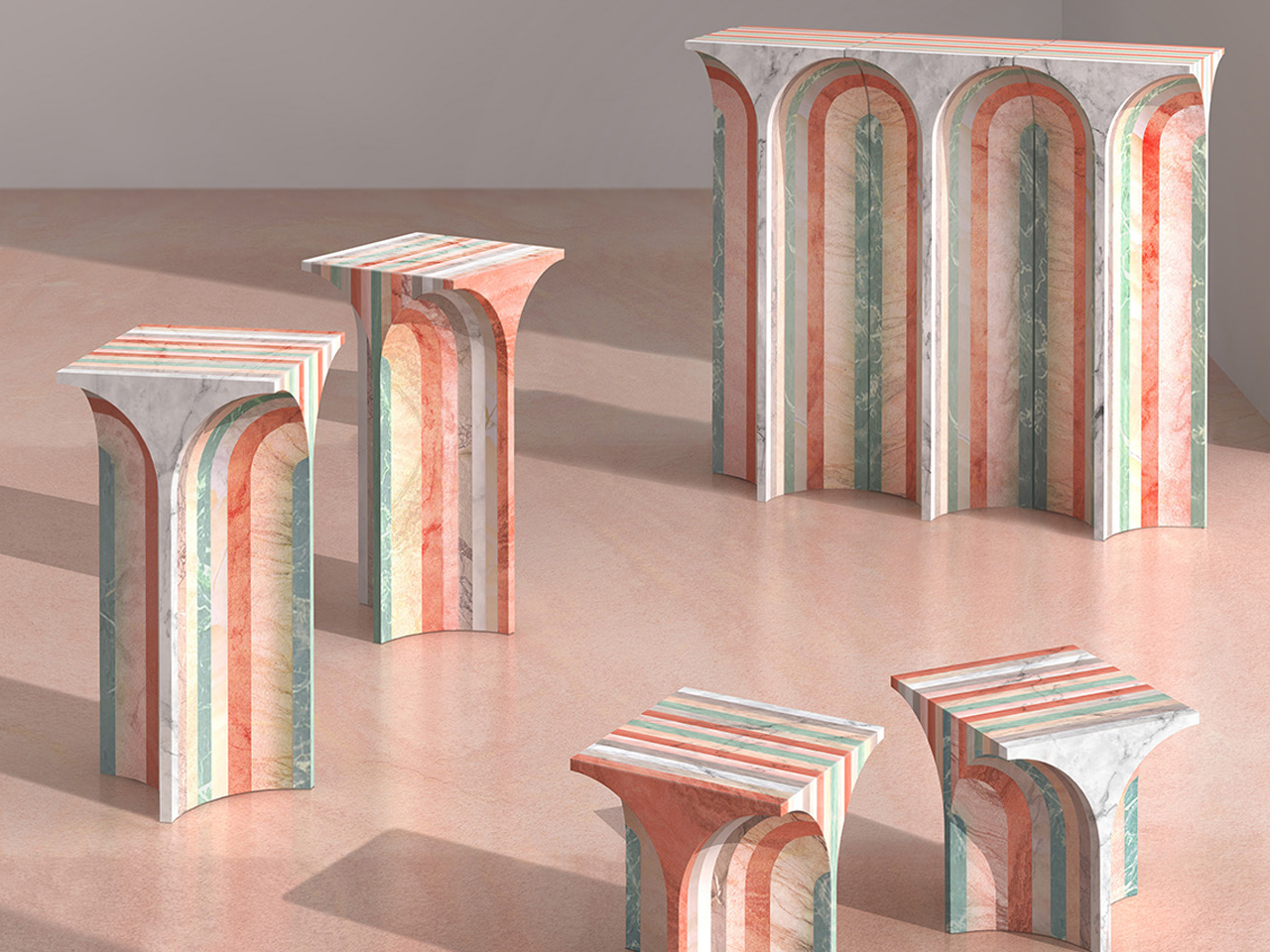
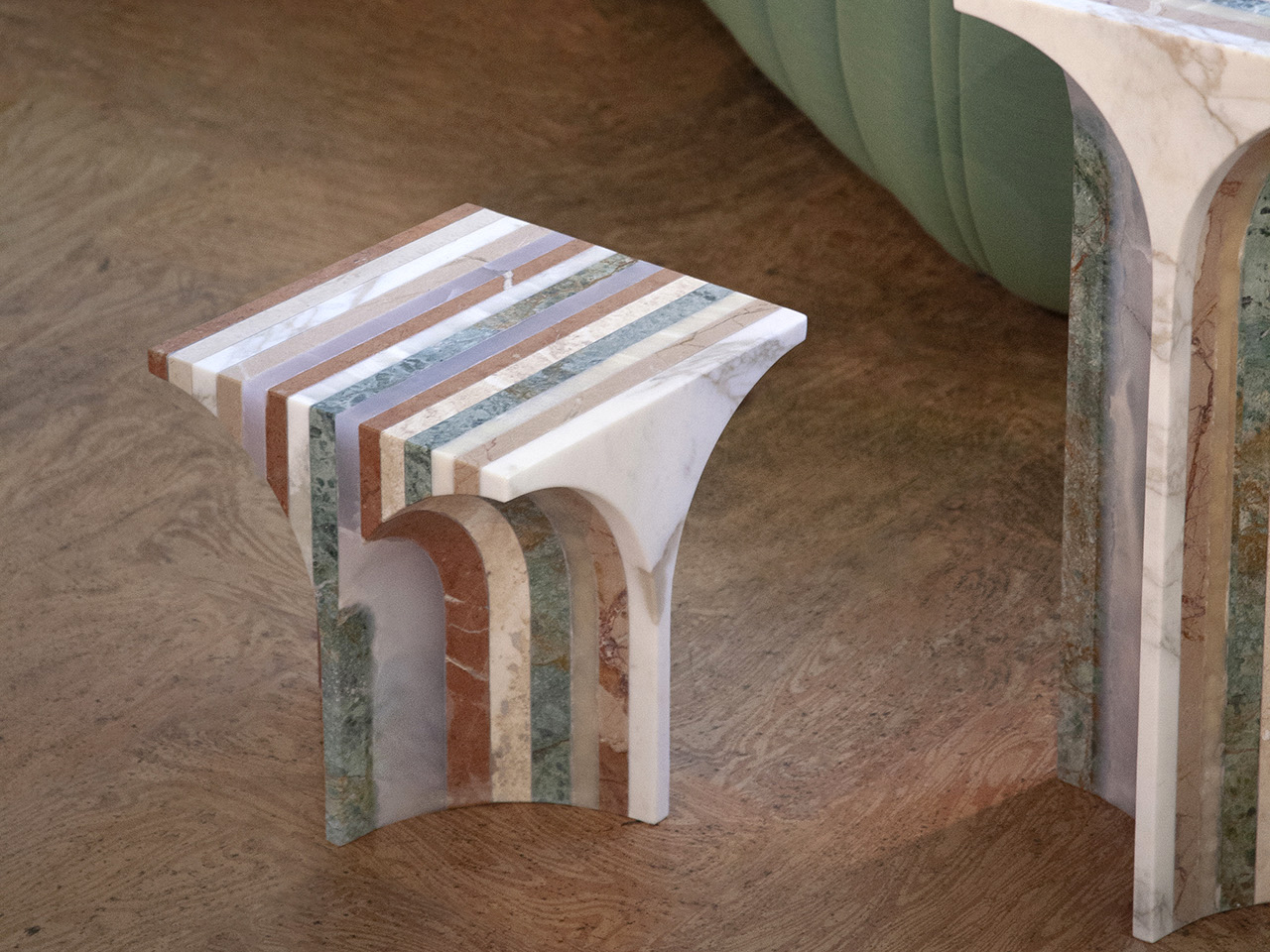
The FIVE x SEVEN collection showcases tables by BUDDE using marble off-cuts. Each piece features striking linear patterns formed by the natural veining of seven different types of marble in earthy hues.
The precise lines of these tables highlight the stone’s inherent beauty, creating a sophisticated interplay of textures and colors that emphasizes the marble’s unique, linear characteristics.
9. Inlay Design
Inlay in furniture design involves embedding materials such as wood, metal, or mother-of-pearl into the surface of a piece, creating intricate patterns and designs. This technique adds a layer of elegance and craftsmanship, often transforming simple furniture into exquisite works of art.
Inlay can highlight specific features or create focal points, enhancing the overall aesthetic. By combining different textures and colors, inlay work introduces depth and sophistication, making each piece uniquely captivating.
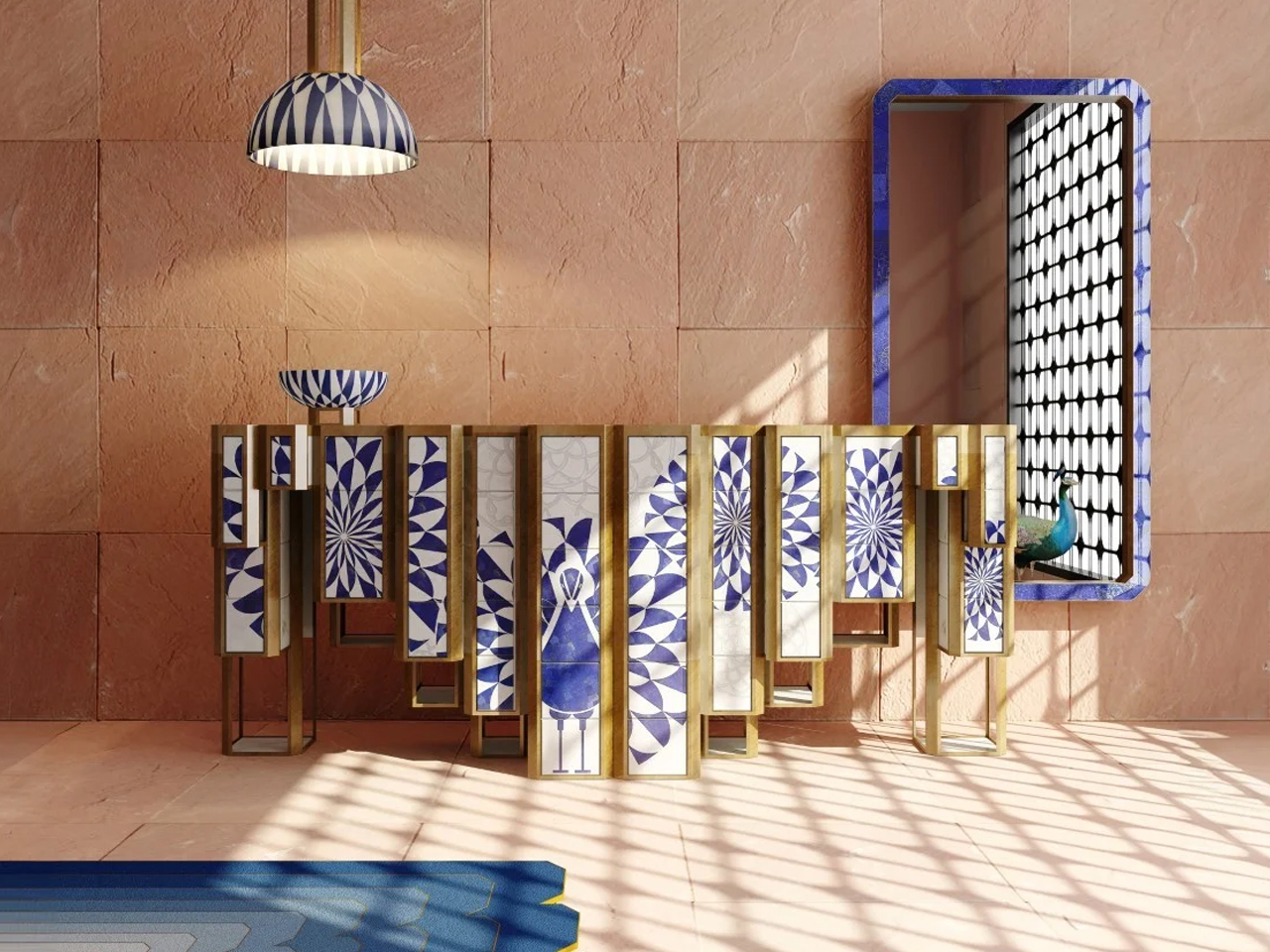
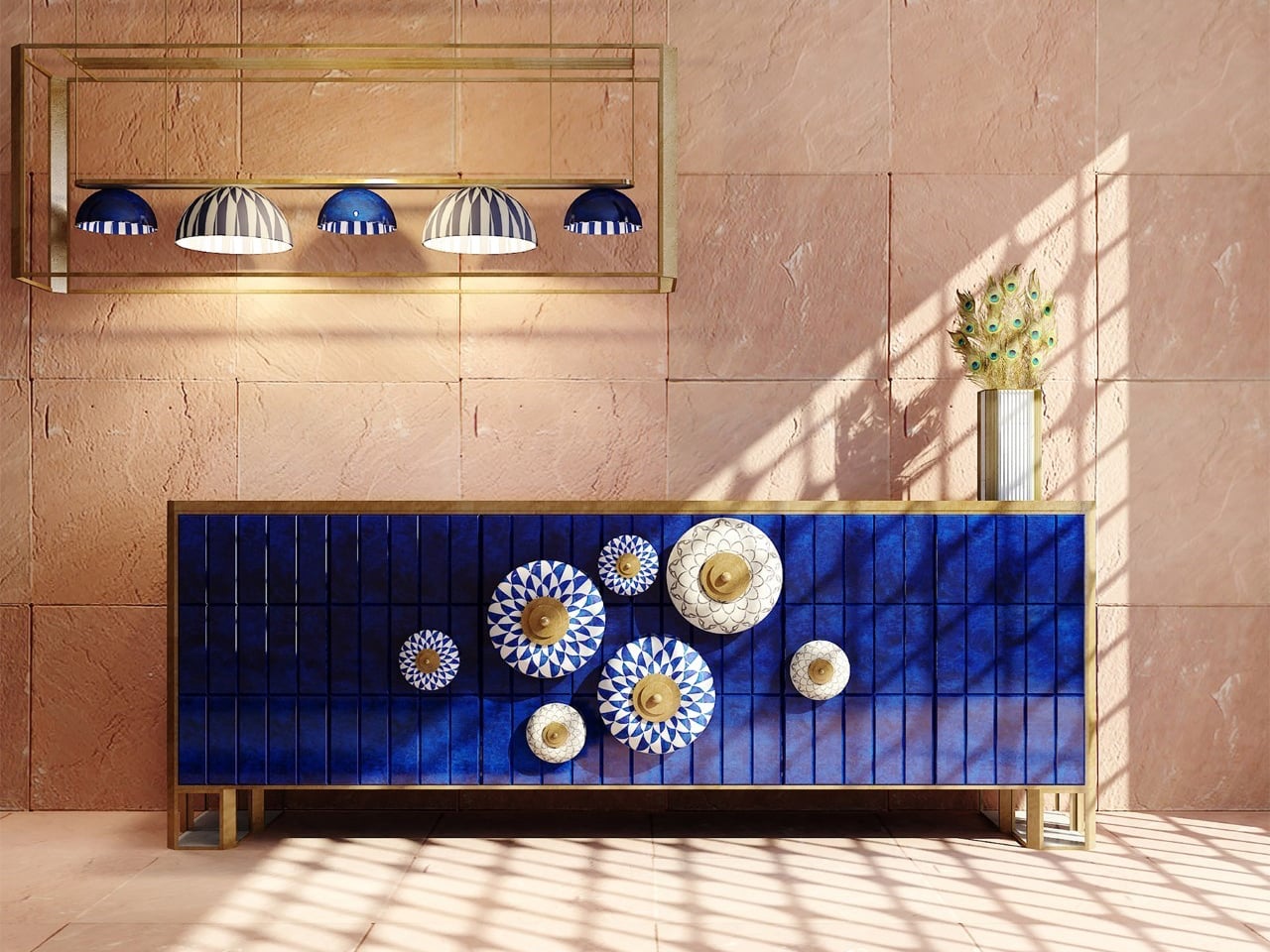
The Jaipur Furniture Collection by Sonal Tuli transforms traditional craftsmanship into modern art, inspired by Jaipur’s vibrant heritage. Featuring pieces like the Jaipur sideboard, chandelier, mirror, and rug, the collection showcases exquisite inlay patterns using white marble and lapis lazuli.
Each handcrafted item highlights intricate stone inlay techniques that reflect Jaipur’s architectural beauty and cultural richness. Despite challenges, such as transitioning from blue pottery to marble, Tuli’s collection perfectly blends functionality with opulent design.
10. Tactile Patterns
Tactile patterns in furniture design focus on texture, inviting touch and enhancing sensory experiences. By incorporating materials like woven fabrics, embossed leathers, or carved wood, designers create surfaces that engage the senses and add dimension to a piece.
These patterns not only enrich the visual appeal but also offer comfort and warmth, making furniture more inviting. Tactile elements can complement various styles, from rustic to contemporary, adding a unique and personal touch to interiors.
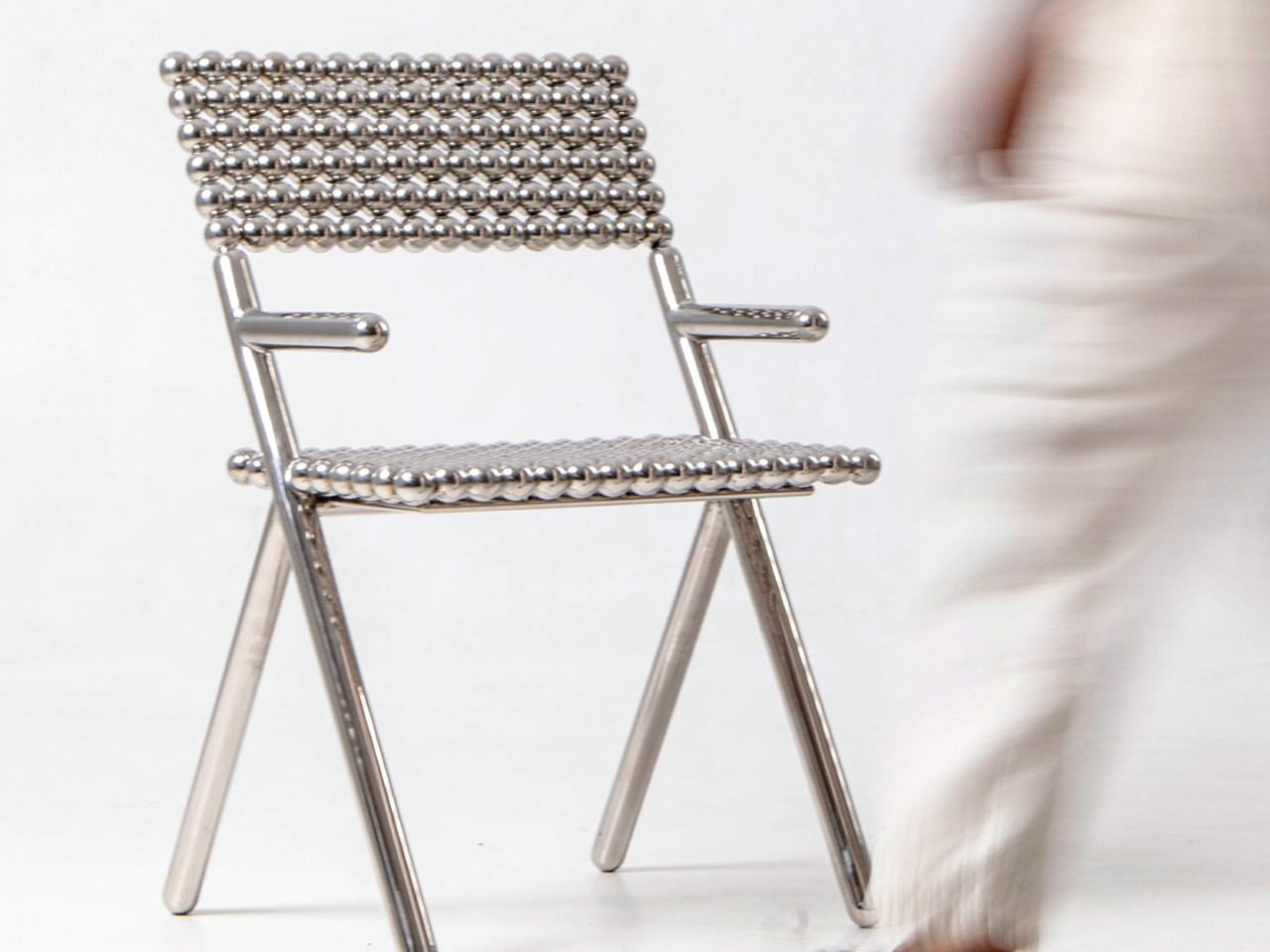
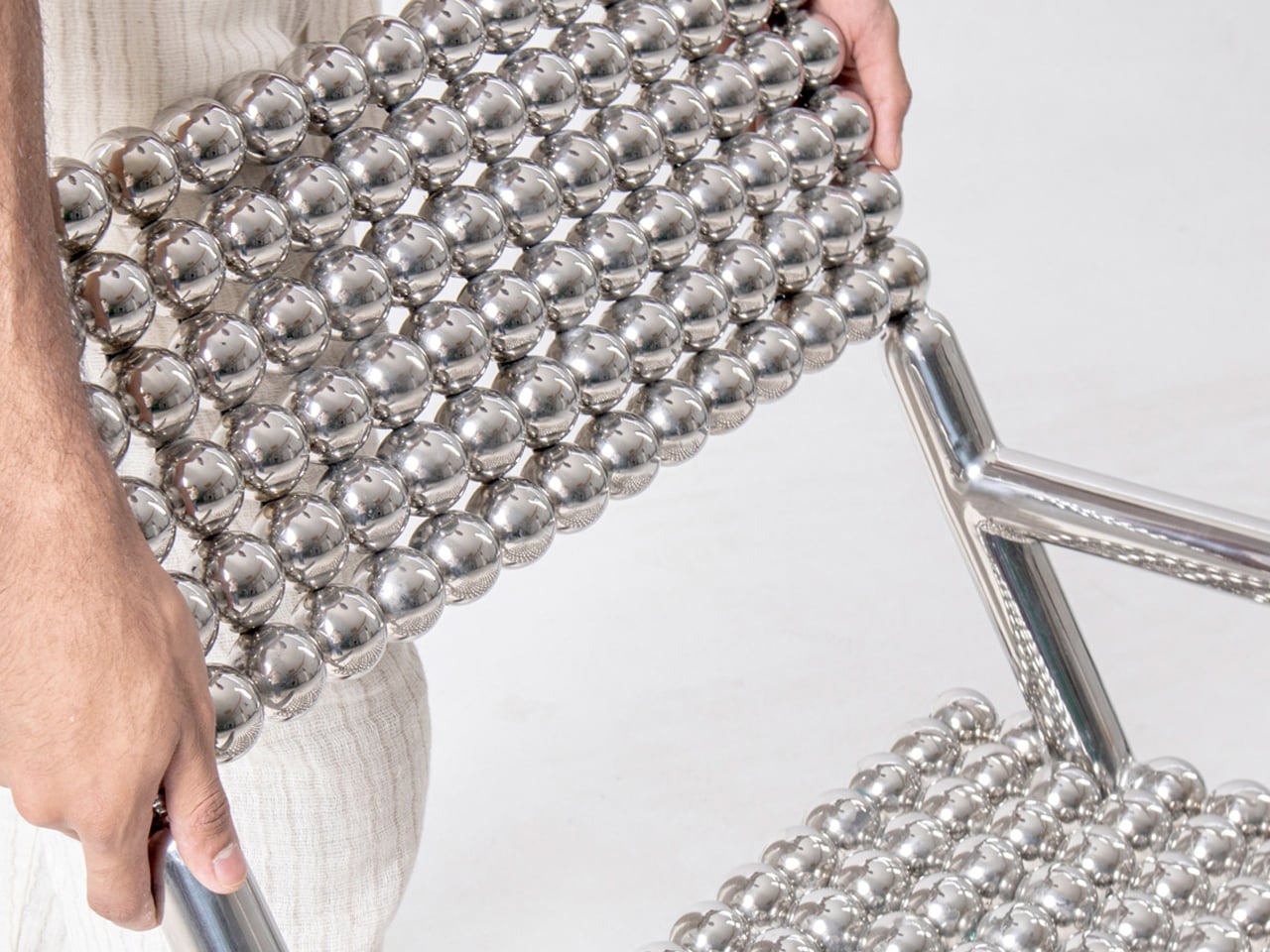
The Tila Chair by Shepherd Studio features a tactile pattern created by 210 chrome-finished stainless steel spheres arranged on a tubular frame. This unique design not only provides a visually striking appearance but also offers an engaging tactile experience.
The spheres’ reflective surfaces and their arrangement create a dynamic interplay of light and shadow, making the chair a conversation piece that transforms its environment through visual and tactile stimulation.
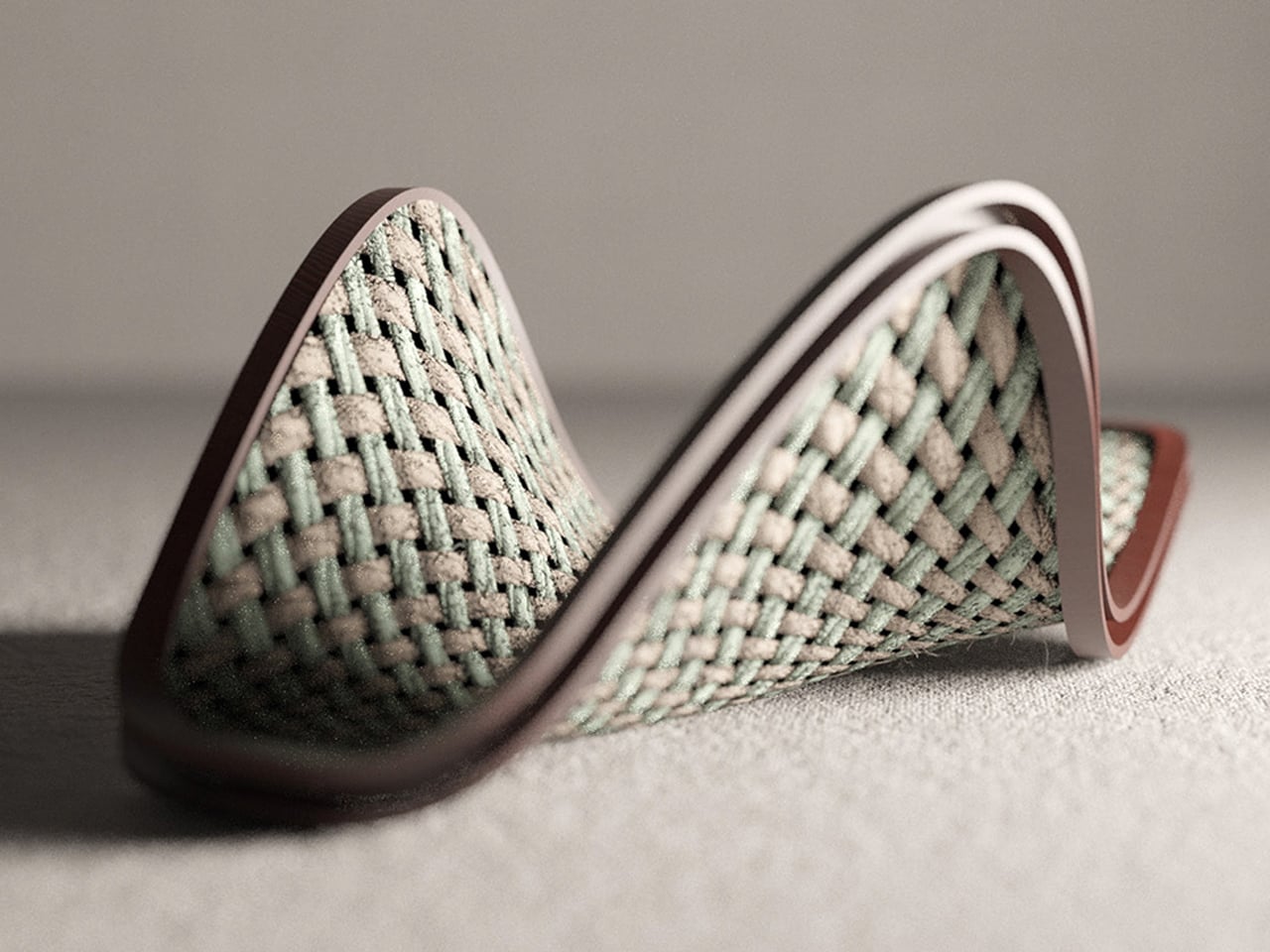
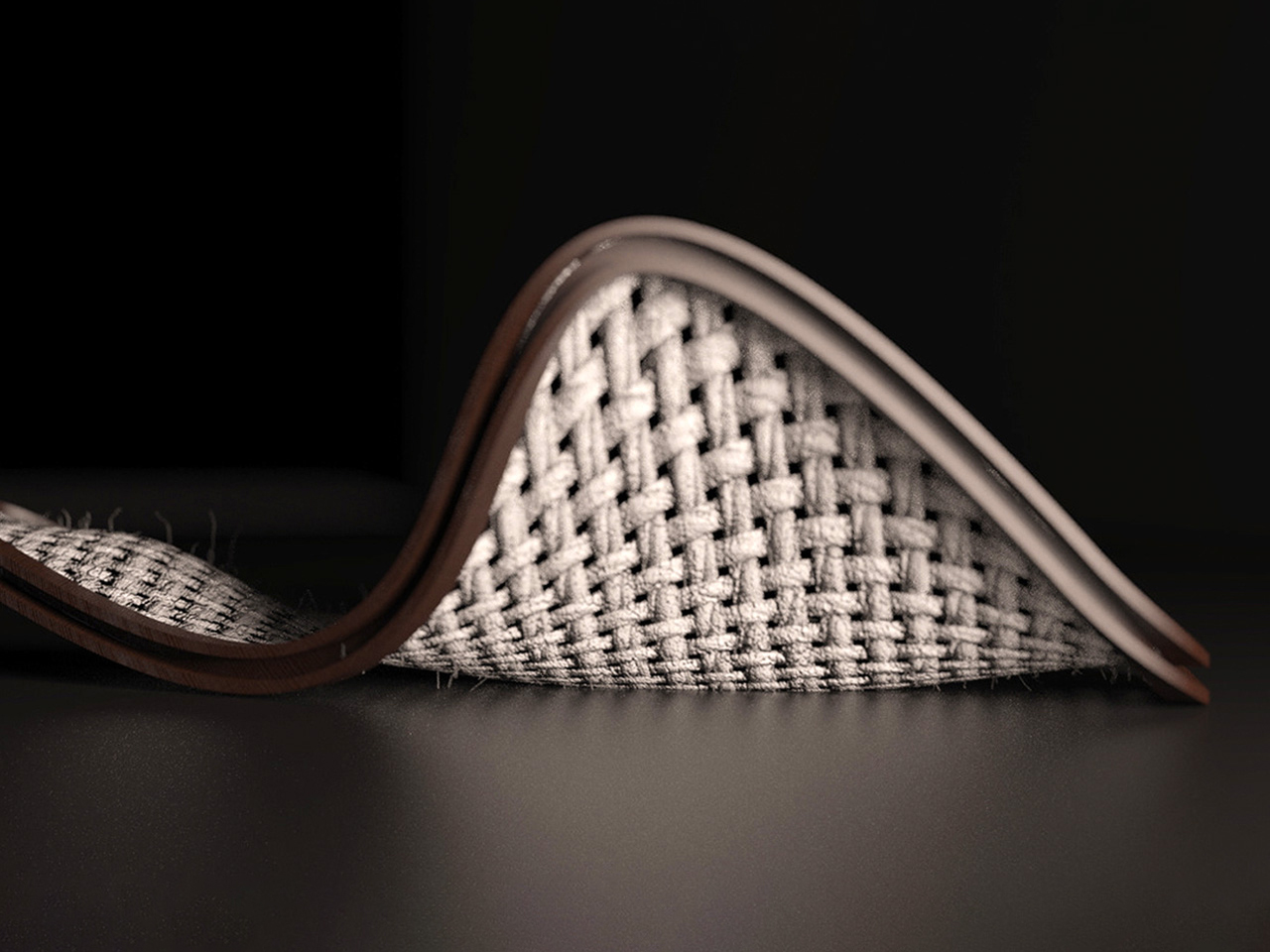
The Cocoon Chair by Miray Özlem ER combines innovative design with comfort, inspired by the butterfly’s transformative cocoon. Featuring a knitted seating area supported by a wooden frame, it wraps around the user, offering a warm, cozy embrace. Though sizable, its unique, flowing form creates a striking focal point while providing a snug, full-body resting spot.
The Cocoon Chair blends functionality, comfort, and aesthetics into a distinctive, immersive experience.
Patterned furniture trends are redefining interior design, adding a new dimension to home décor. With ongoing experimentation and innovation, these trends are here to stay, offering exciting opportunities to incorporate bold patterns and designs into your space.




